In the village of Martock (pop. 4800) in Somerset, UK, is a garden that represents a marital meeting of the minds. Yews Farm, and its beautiful farmhouse…..
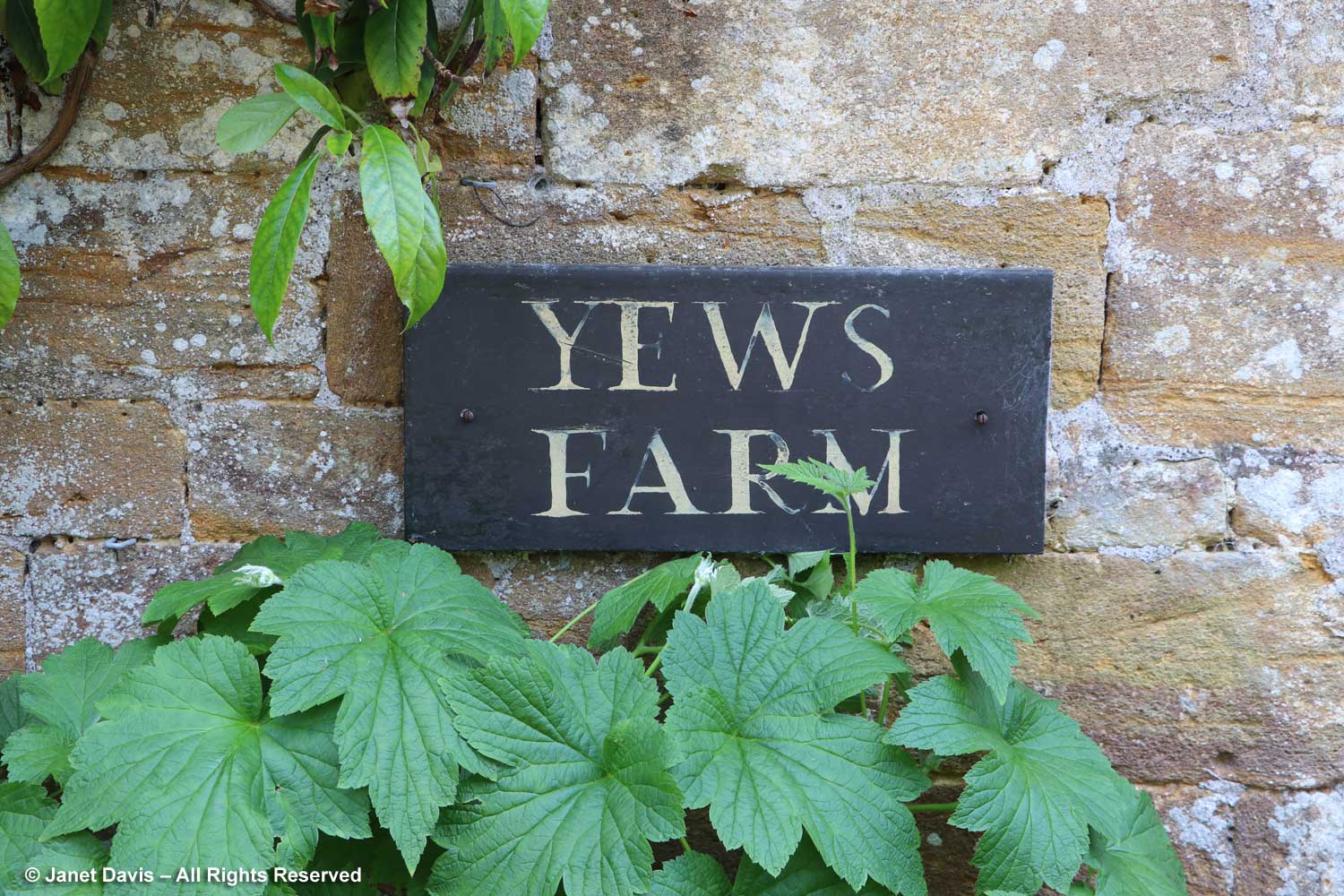
…. with its small, north-facing front garden of tidy lawn and narrow shady border….
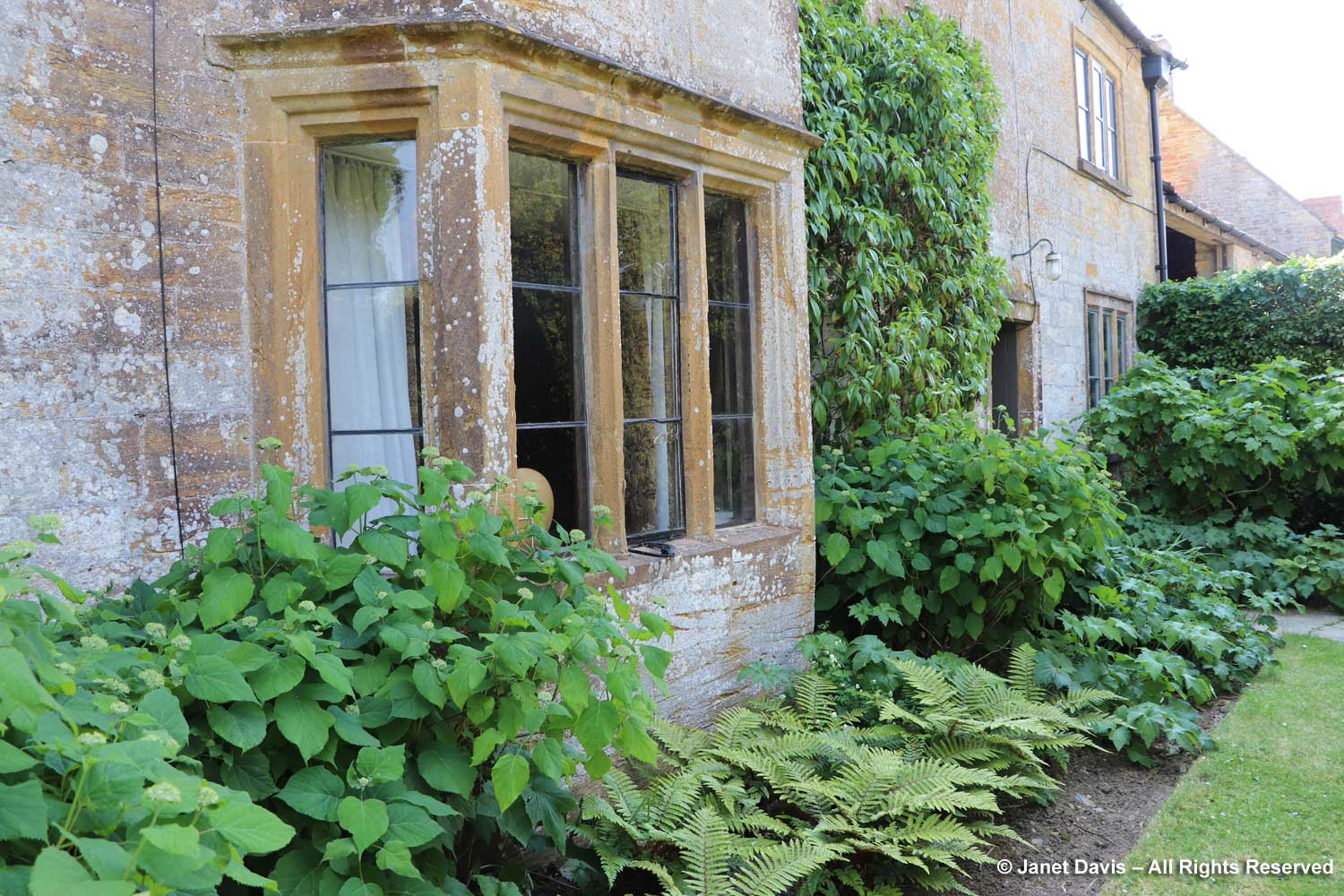
…. featuring foliage plants in elegant combinations…
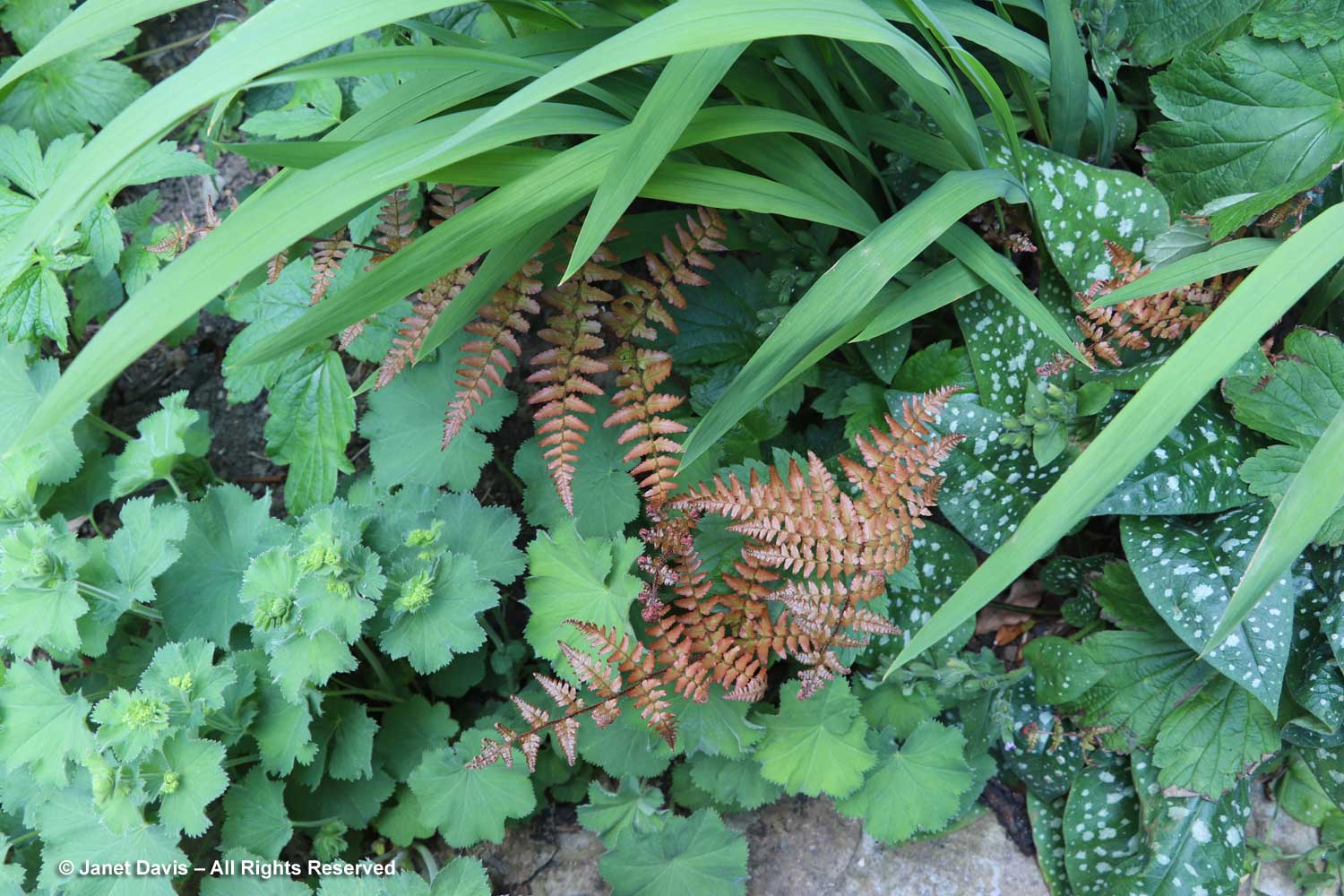
… and soft shield fern (Polystichum setiferum)….
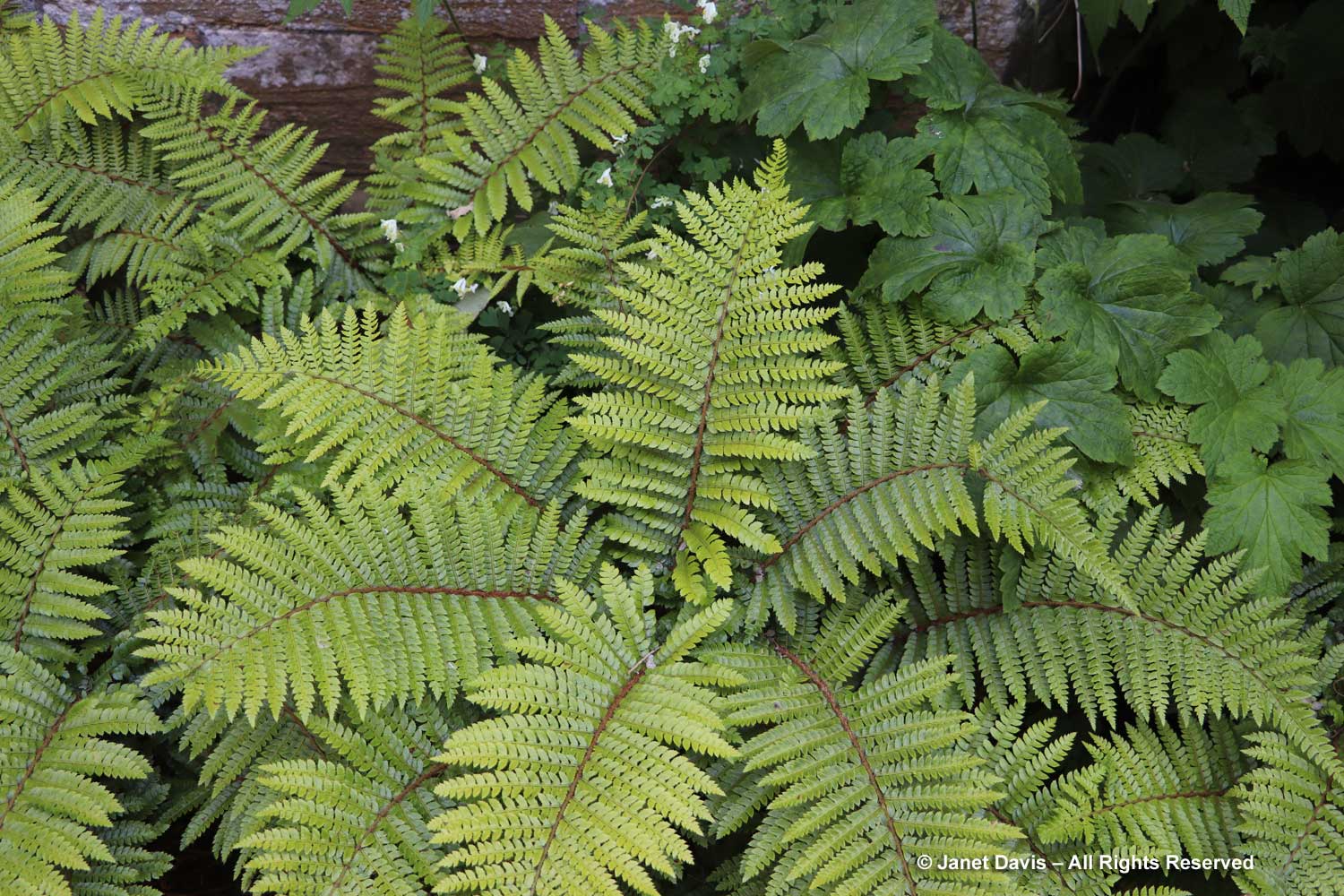
… doesn’t really prepare you for what you are about to see when you turn the corner. Here, separated by a tall hedge from the back of the garden, is a gravel courtyard filled with a jungle of plants grown for their bold forms and interesting foliage. Giant fennel (Ferula communis) grows cheek-and-jowl beside …..
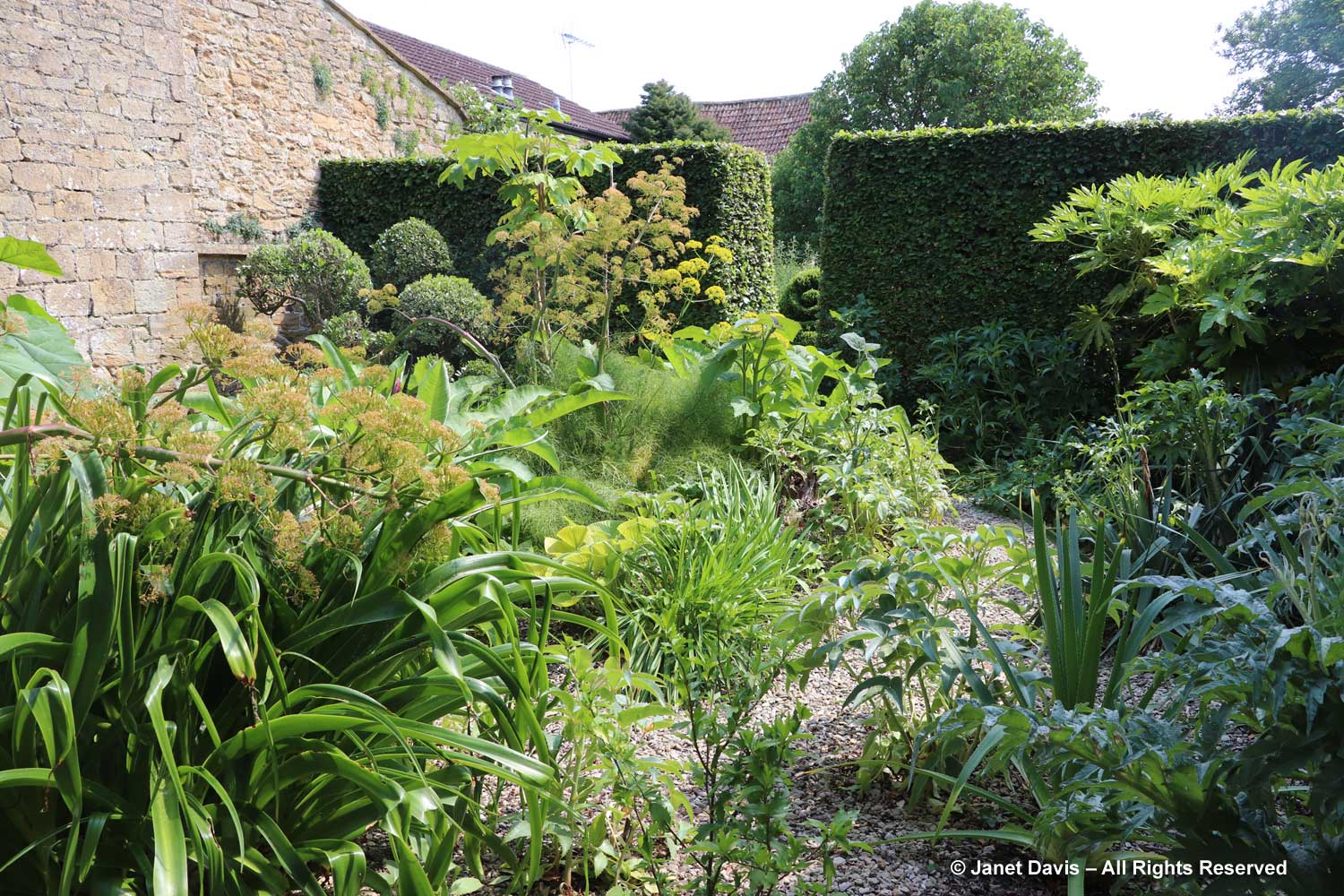
…. Chinese rice-paper plant (Tetrapanax papyrifer) ……
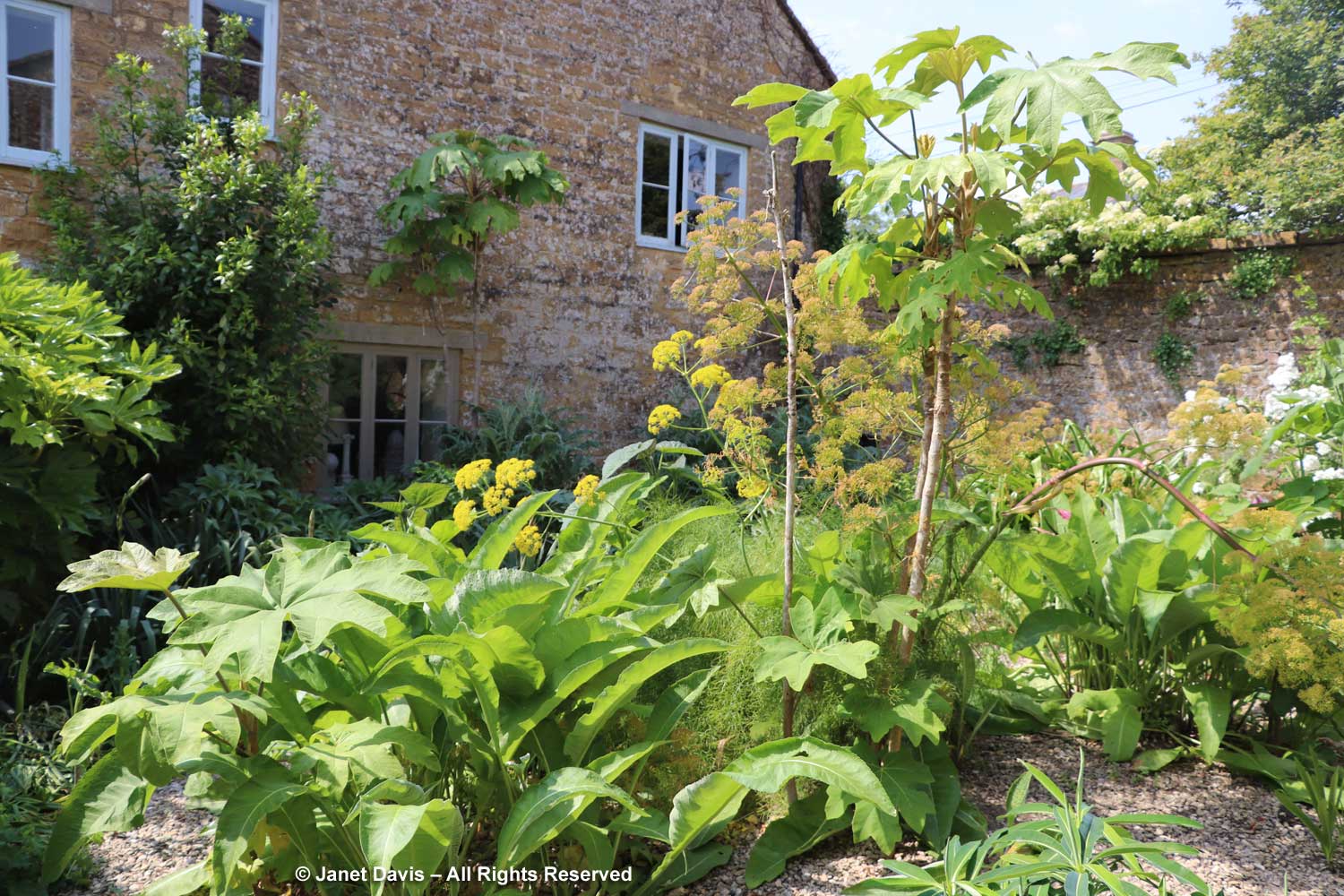
….. with little surprises such as dragon lily (Dracunculus vulgaris) peeking out along the path.
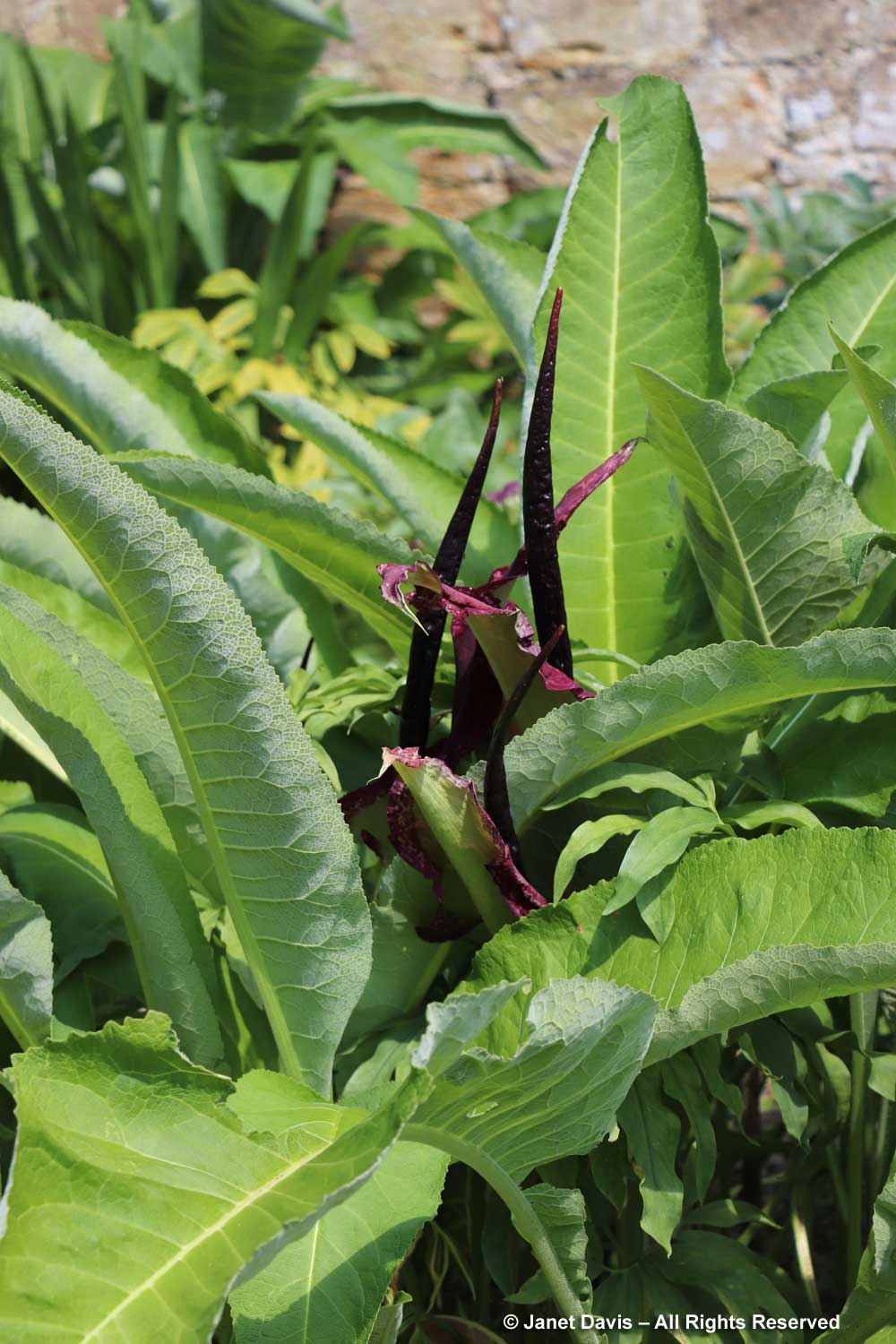
Walk through the opening in the hedge to the expansive garden at the rear and you’ve entered a lush, green topiary wonderland with spirals and jelly-moulds sculpted from boxwood (Buxus sempervirens).
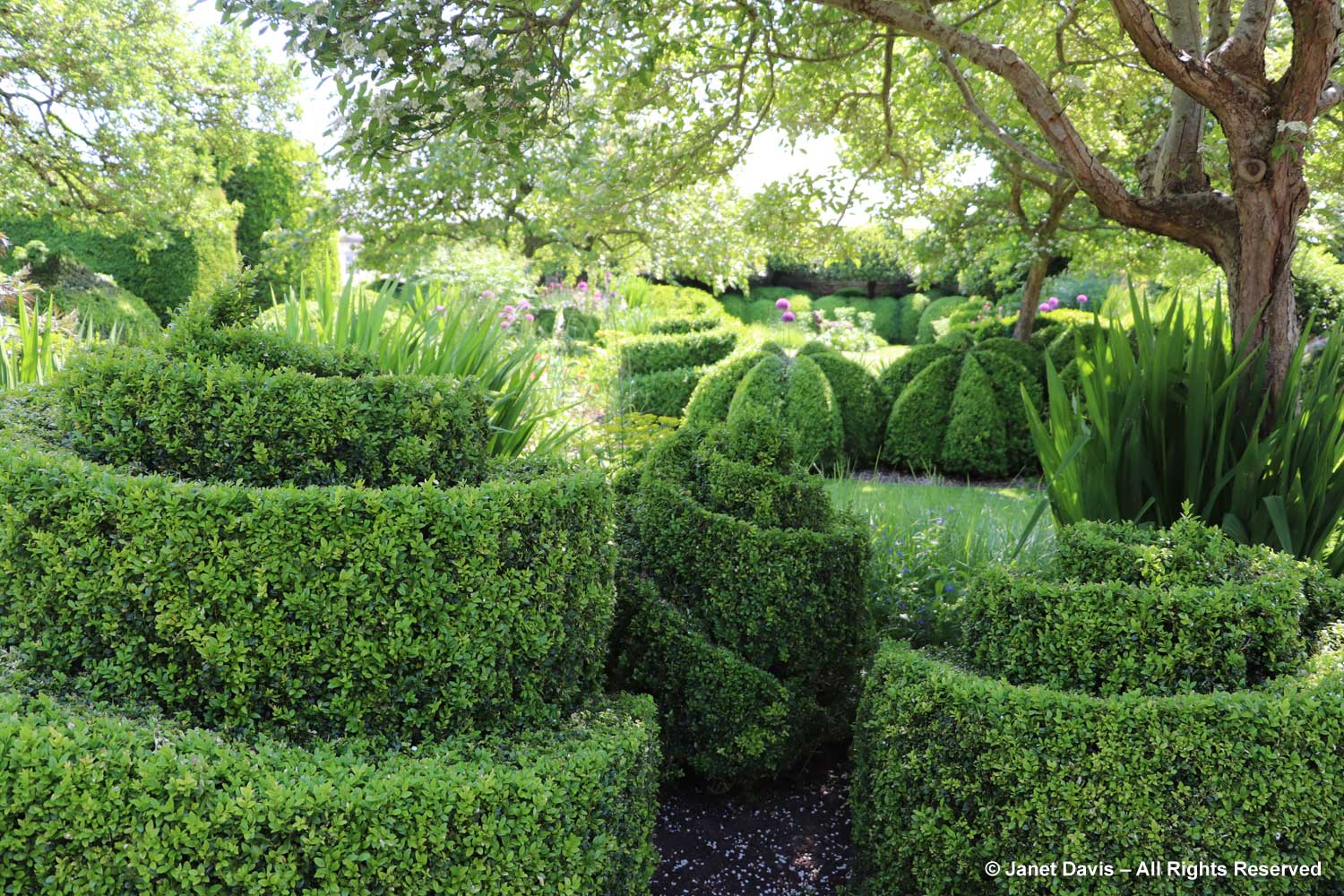
Look up and there is a very perky topiary terrier named Toto leading a leafy parade atop a hedge.
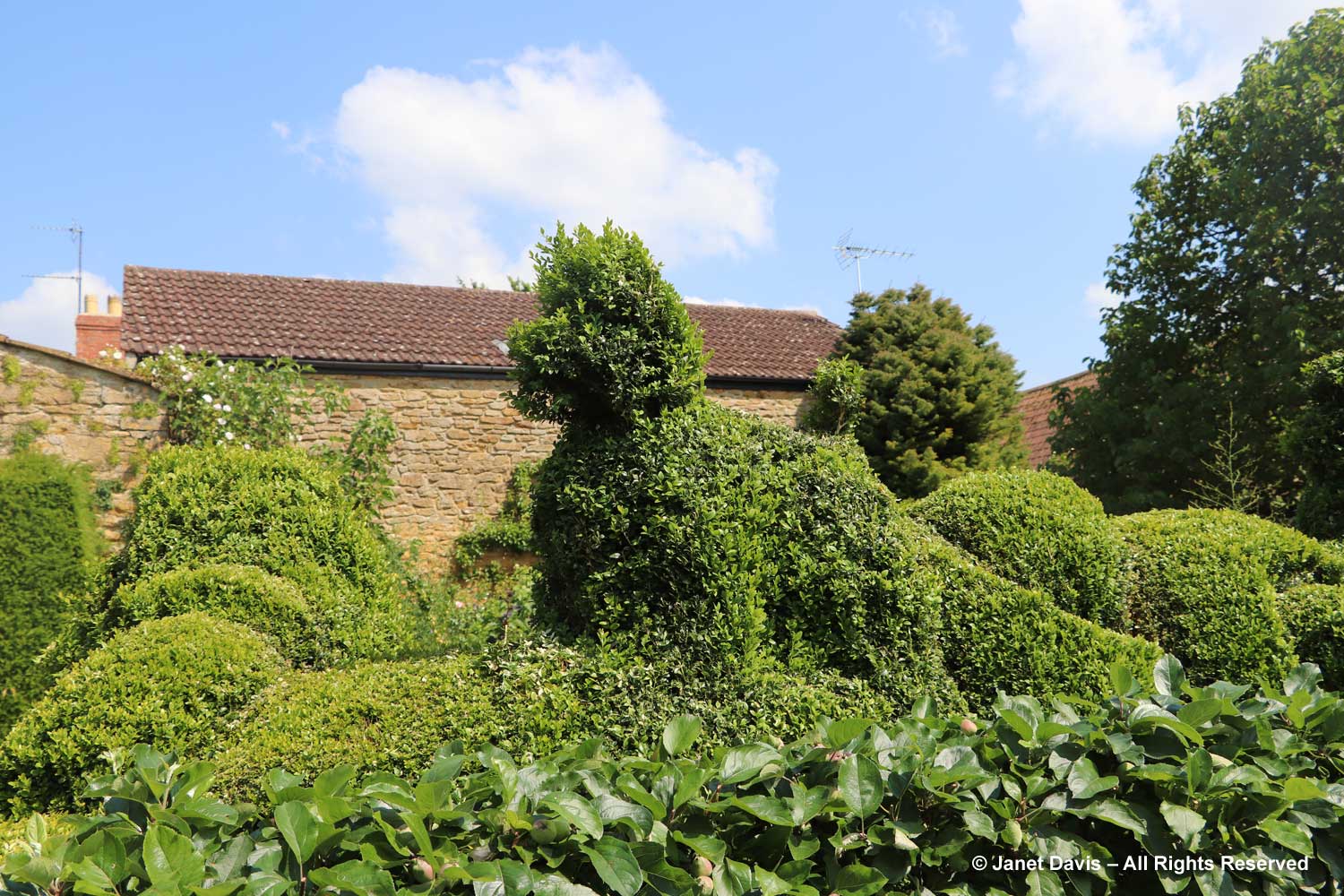
And just by chance, at that very moment, crossing Yew Farm’s charming terrace with its attractive tables and chairs and potted pelargoniums is the family’s non-topiary doppelgänger, a perky terrier.
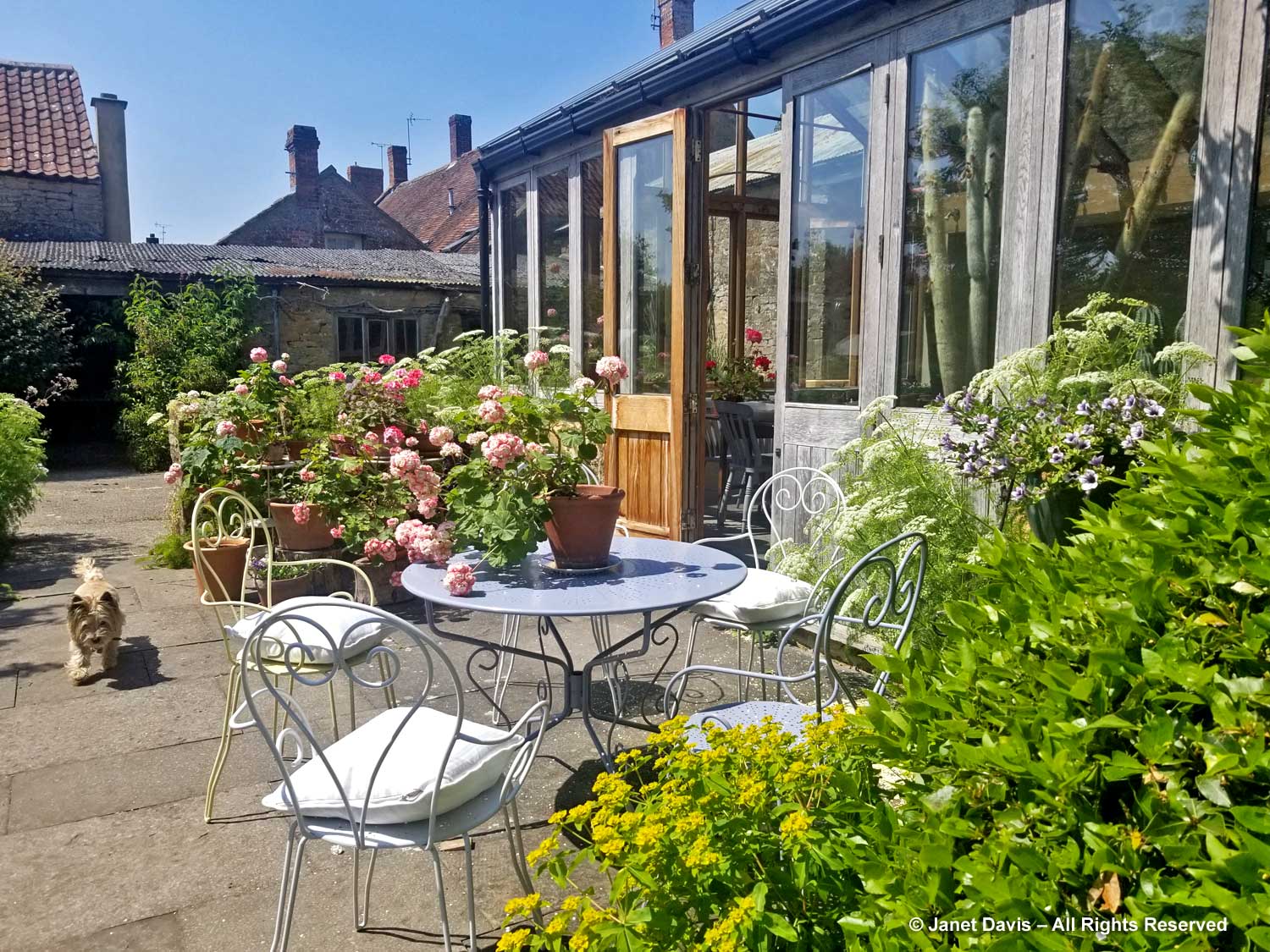
Yews Farm is a 27-year collaboration between Fergus and Louise Dowding. When they acquired the 1-acre property with its farm outbuildings in 1996, it was agreed that they’d each get half the garden in which to do what they loved. For Fergus, that meant food-growing. For Louise, who had trained in landscape design at college and worked two years with the famous garden writer/designer Penelope Hobhouse in her garden at Bettiscombe, it would be her own style of ornamental gardening. Not for her the wavy “hose-pipe” border surrounding a vast lawn favoured by the previous owner. She tore out everything except an old pear tree, divided the garden area into four equal spaces, claimed two for herself and gave two to Fergus. While he promptly began growing Savoy cabbages, broccoli, peas and heritage Martock beans, Louise went for structure. Her borders featured numerous tiny boxwood plants which ultimately became a kind of magical sculpture garden, the topiaries necessitating an intense shearing each June to maintain their shape.
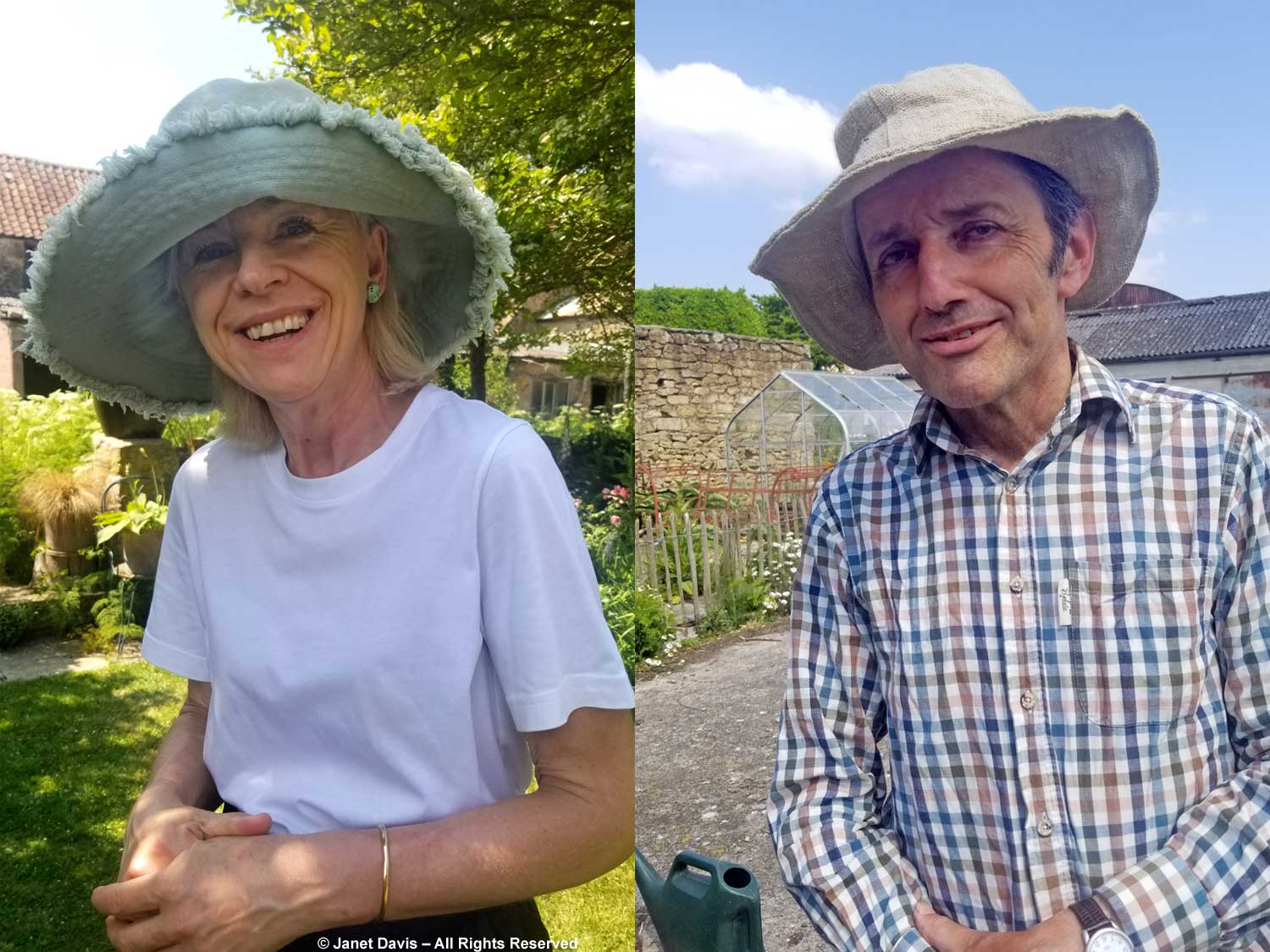
Like an abstract geometric painting, the topiaries form the background to the terrace. This is where Louise’s pelargonium collection and other conservatory plants spend summer, this one on a pretty wirework table….
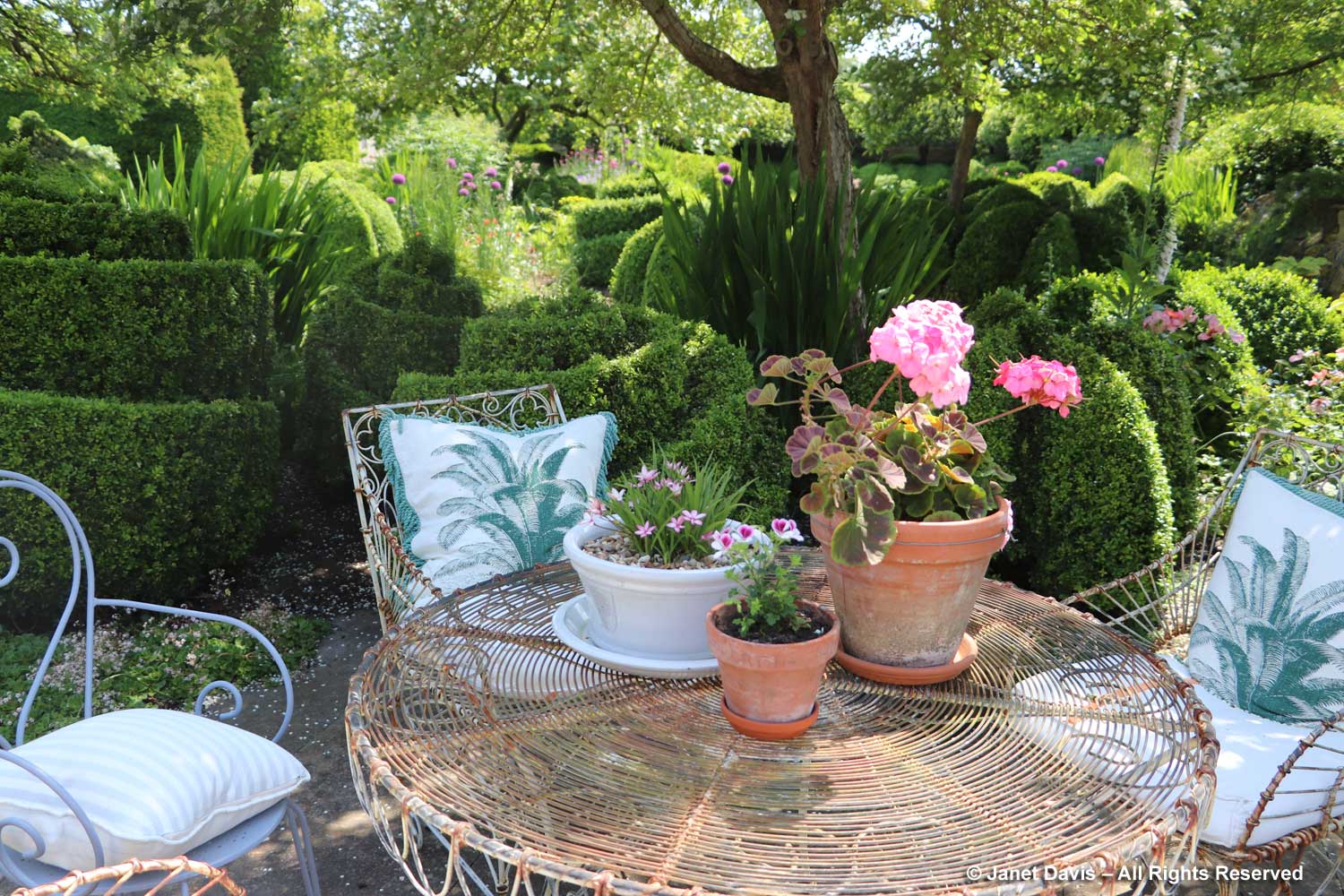
…. and the heritage variety ‘Appleblossom Rosebud’ on a table nearby.
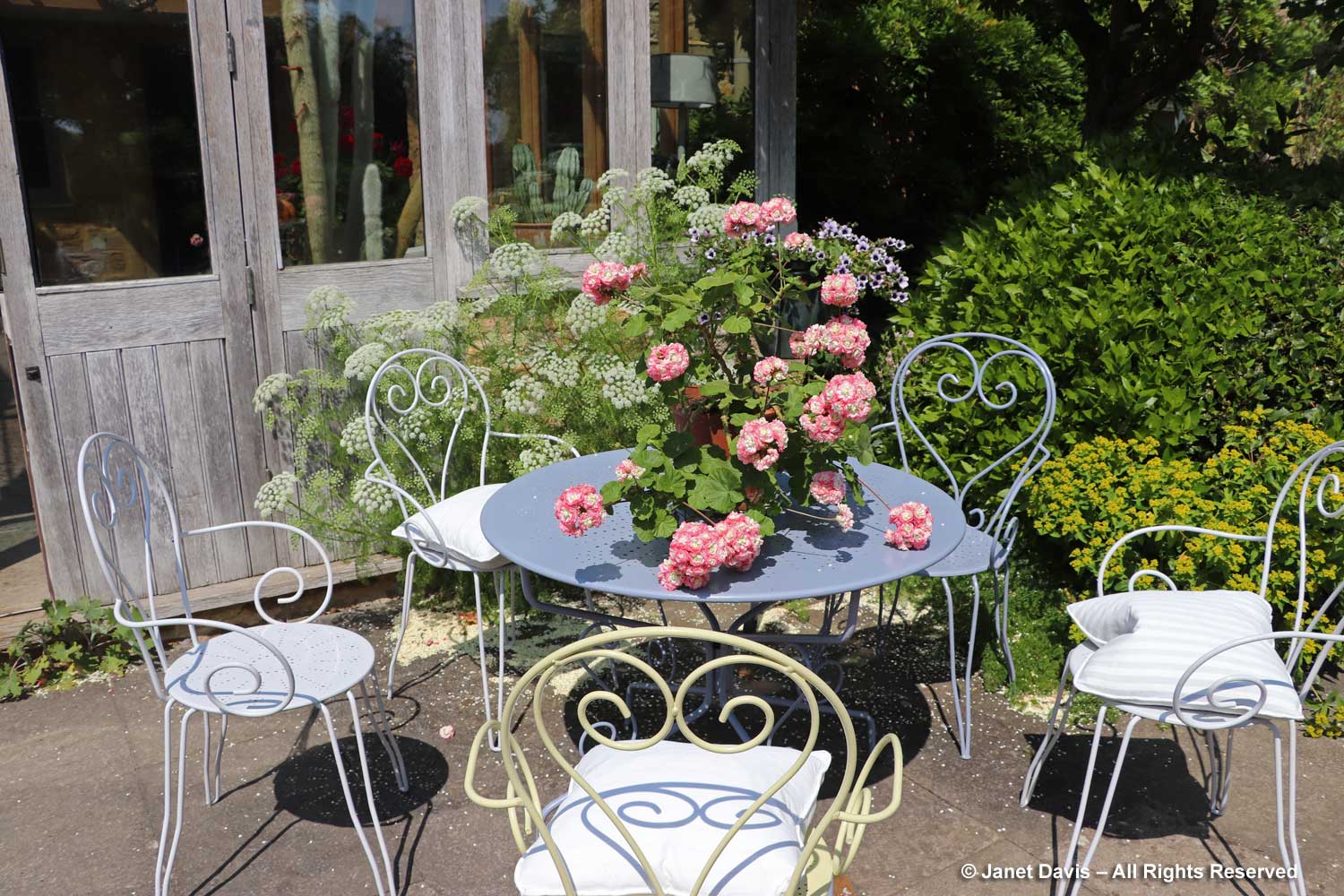
Introduced in 1870, this beautiful double geranium was beloved by Queen Victoria – or so the story goes. And who could blame her?
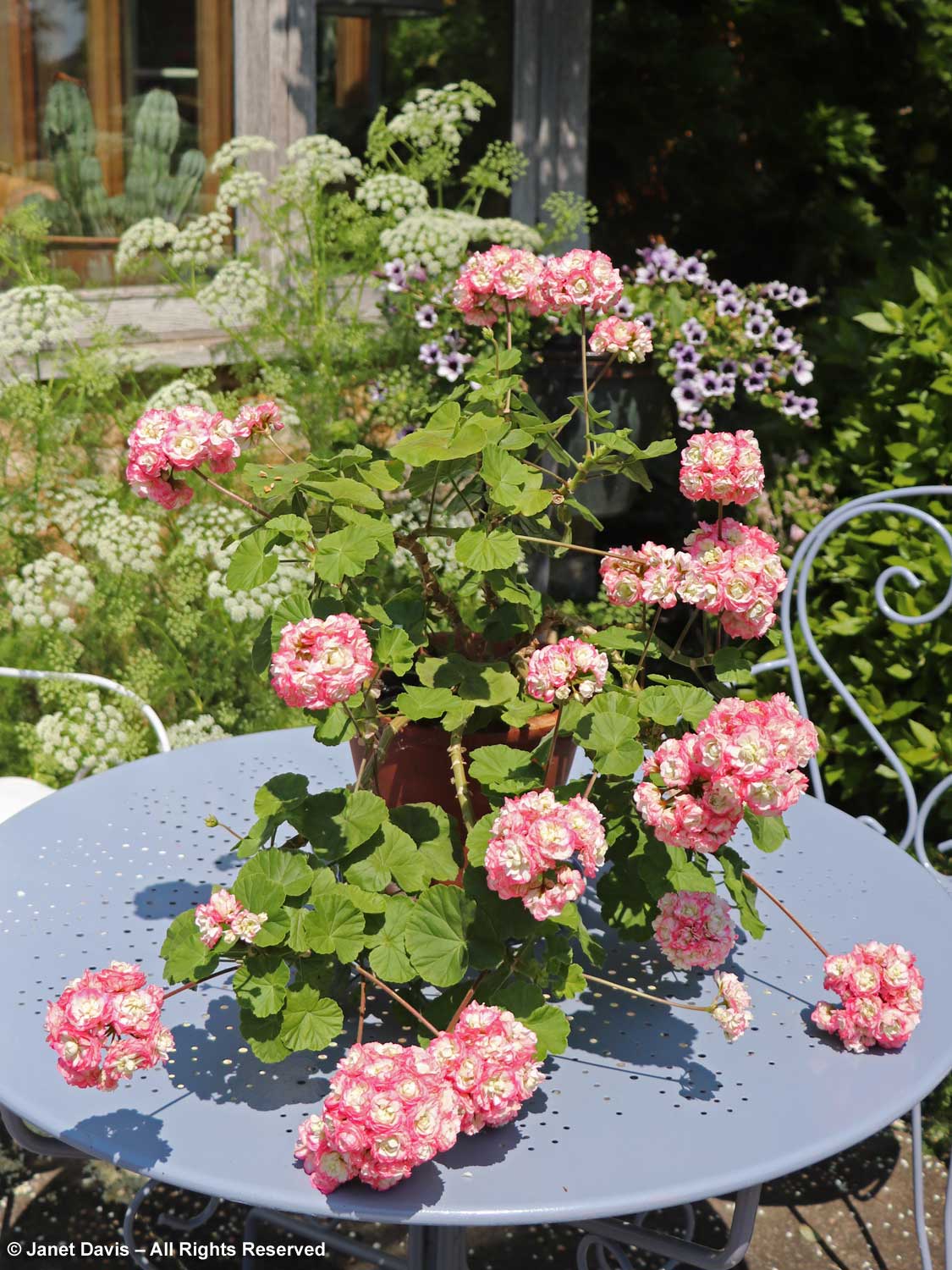
Louise’s borders are generally quiet in colour so as not to compete with the topiaries — the blues and purples of cranesbills, clematis and alliums enlivened here by the brilliant bronze hues of autumn fern (Dryopteris erythrosora).
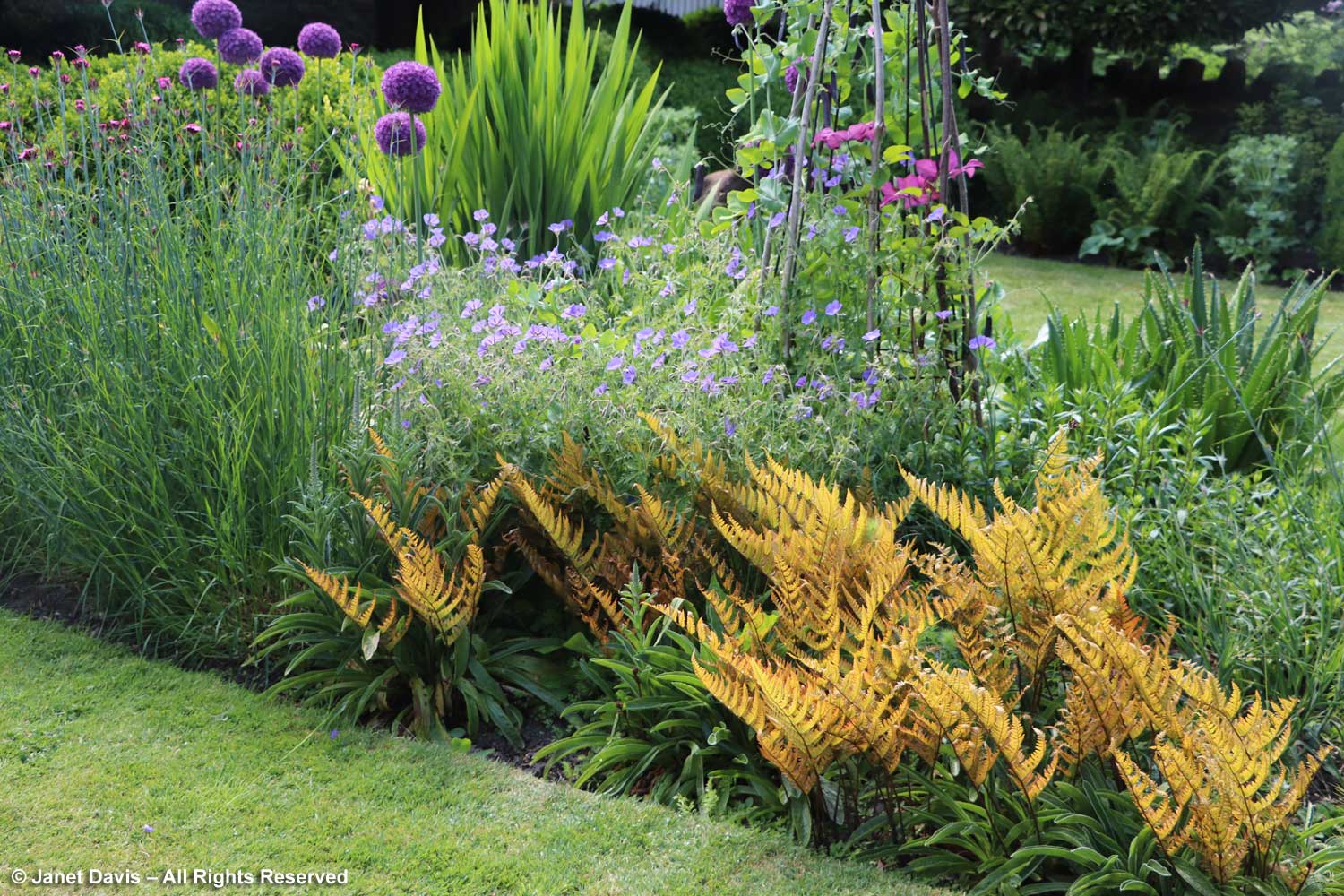
Linaria purpurea ‘Canon Went’ and opium poppies (Papaver somniferum) are allowed to self-seed.
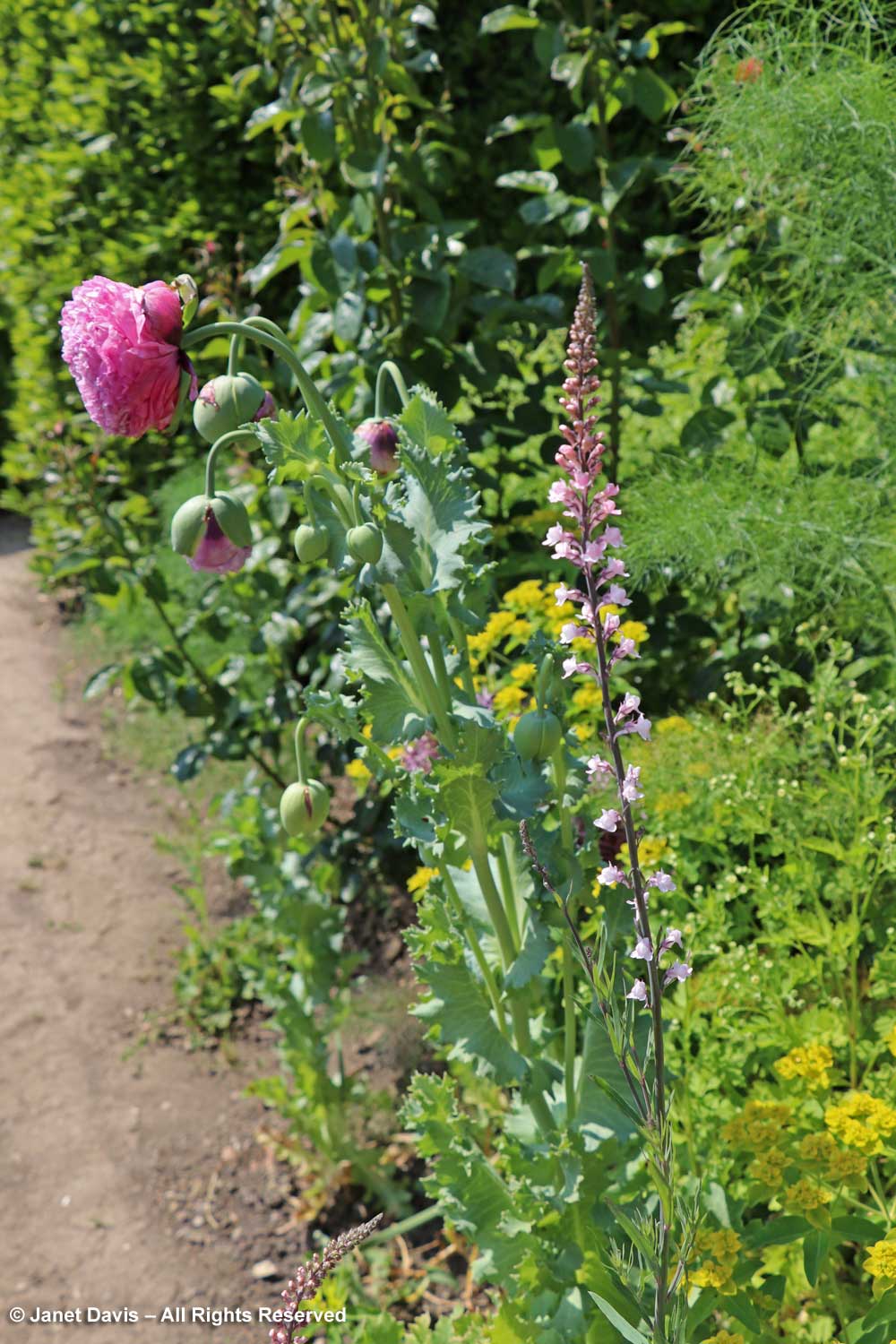
For Fergus, vegetable gardening is the reason to garden yet his spaces are beautiful, too. Since our visit is in the first half of an extraordinarily cool June, the squash and artichokes are still filling out…..
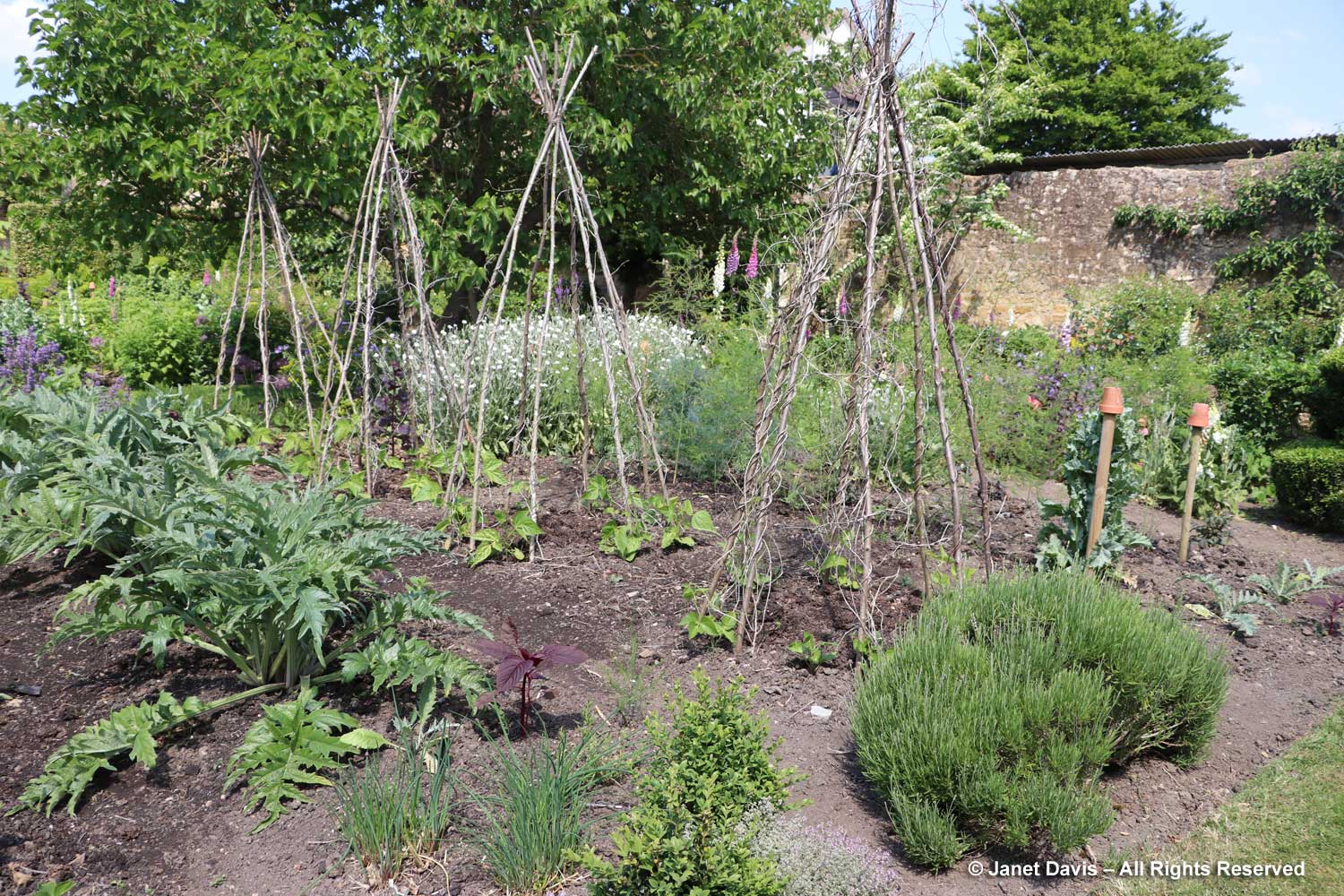
….and peas are still finding their legs on the pretty pea sticks.
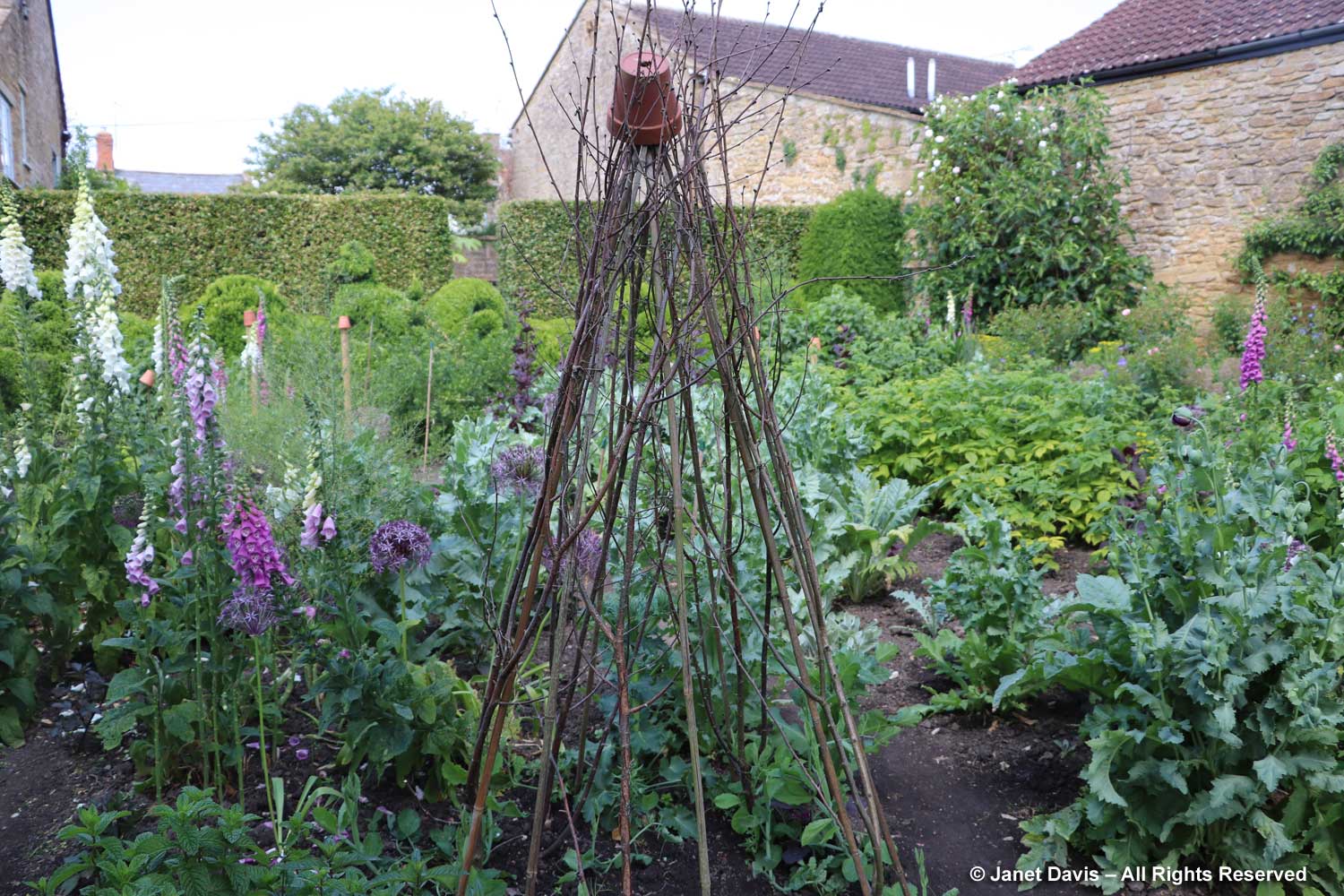
An espaliered fruit tree occupies a neighbouring wall, and it’s clear that Louise has sneaked some foxgloves and poppies into this productive space with its topiary snails in the background.
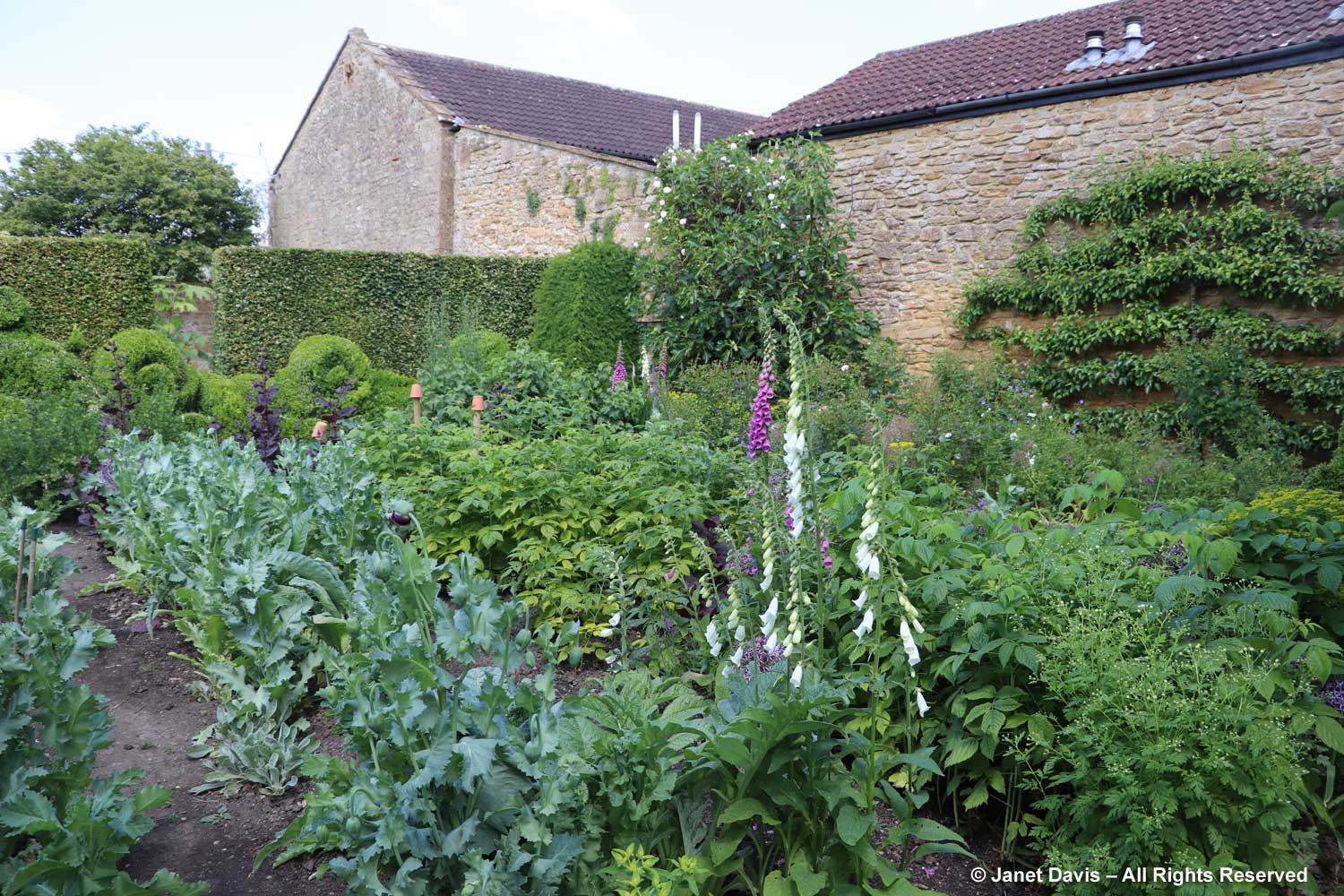
For a North American, “cleft chestnut fencing” sounds like a quaint way to separate the ornamental part of the garden with its peonies and irises from the legacy farmyard beyond it.
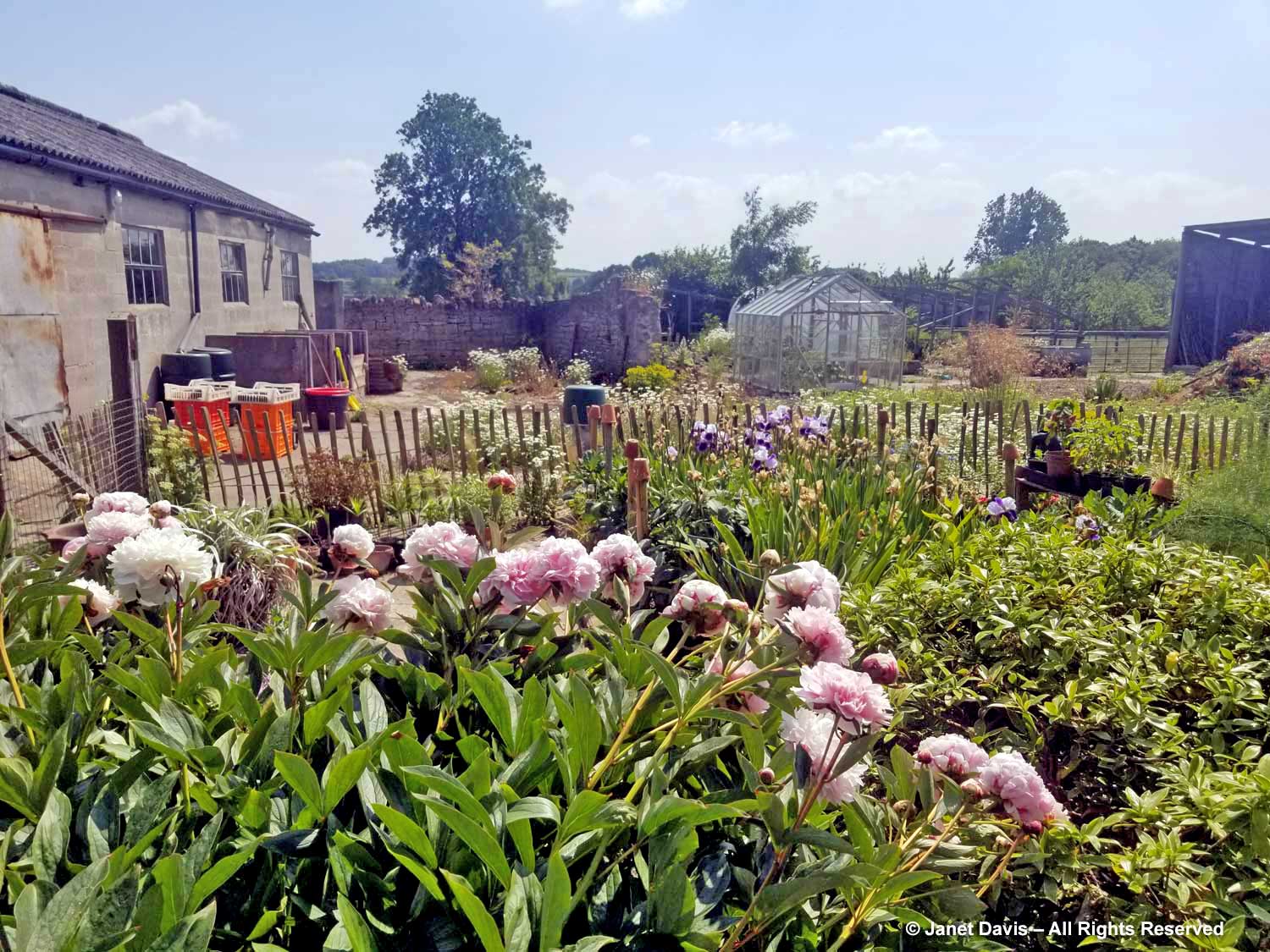
The view below is back into the ornamental garden. I love that Yews Farm remains so well-rounded with a thoughtful sense of place that melds the lush urban garden with the hard-working agricultural past.
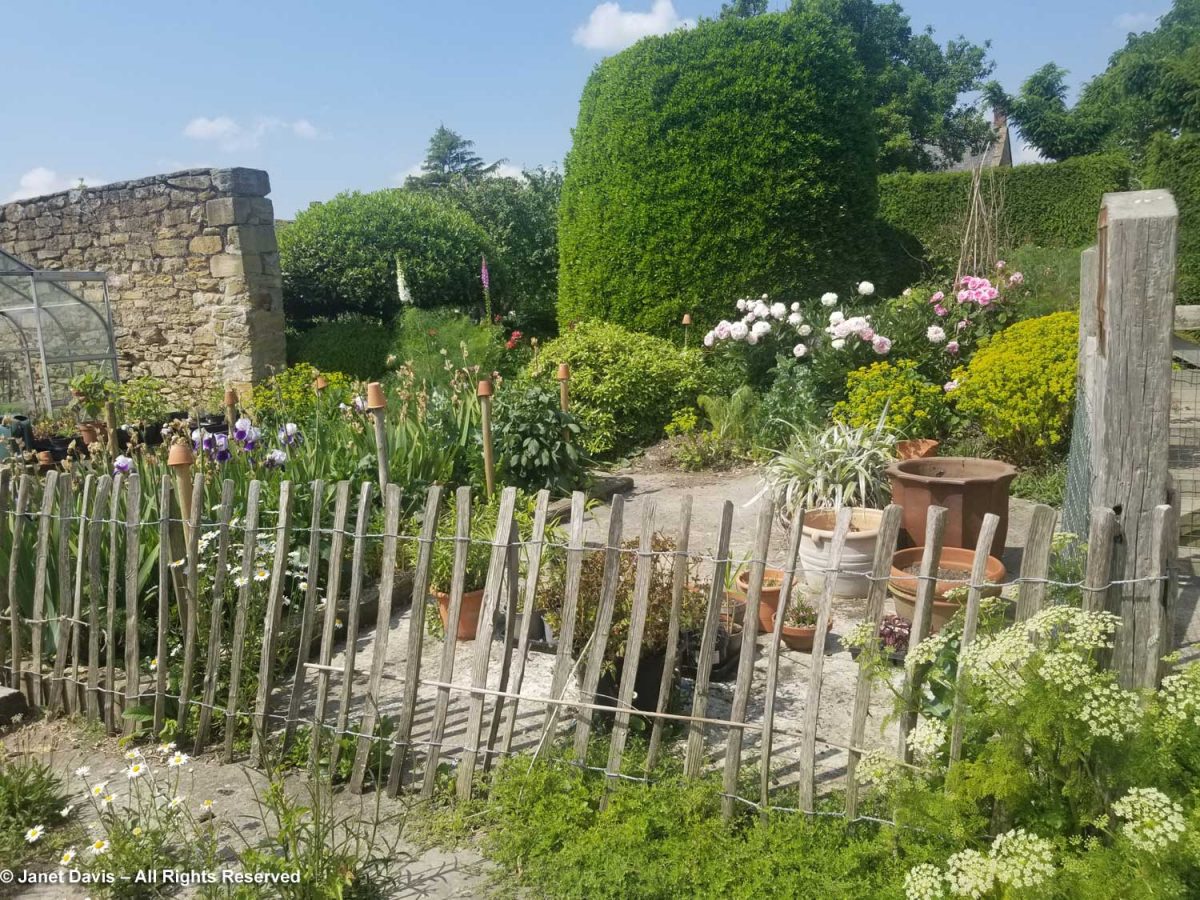
There’s a wildish meadow in the farmyard with oxeye daisies, potentilla and other self-seeding native wildflowers.
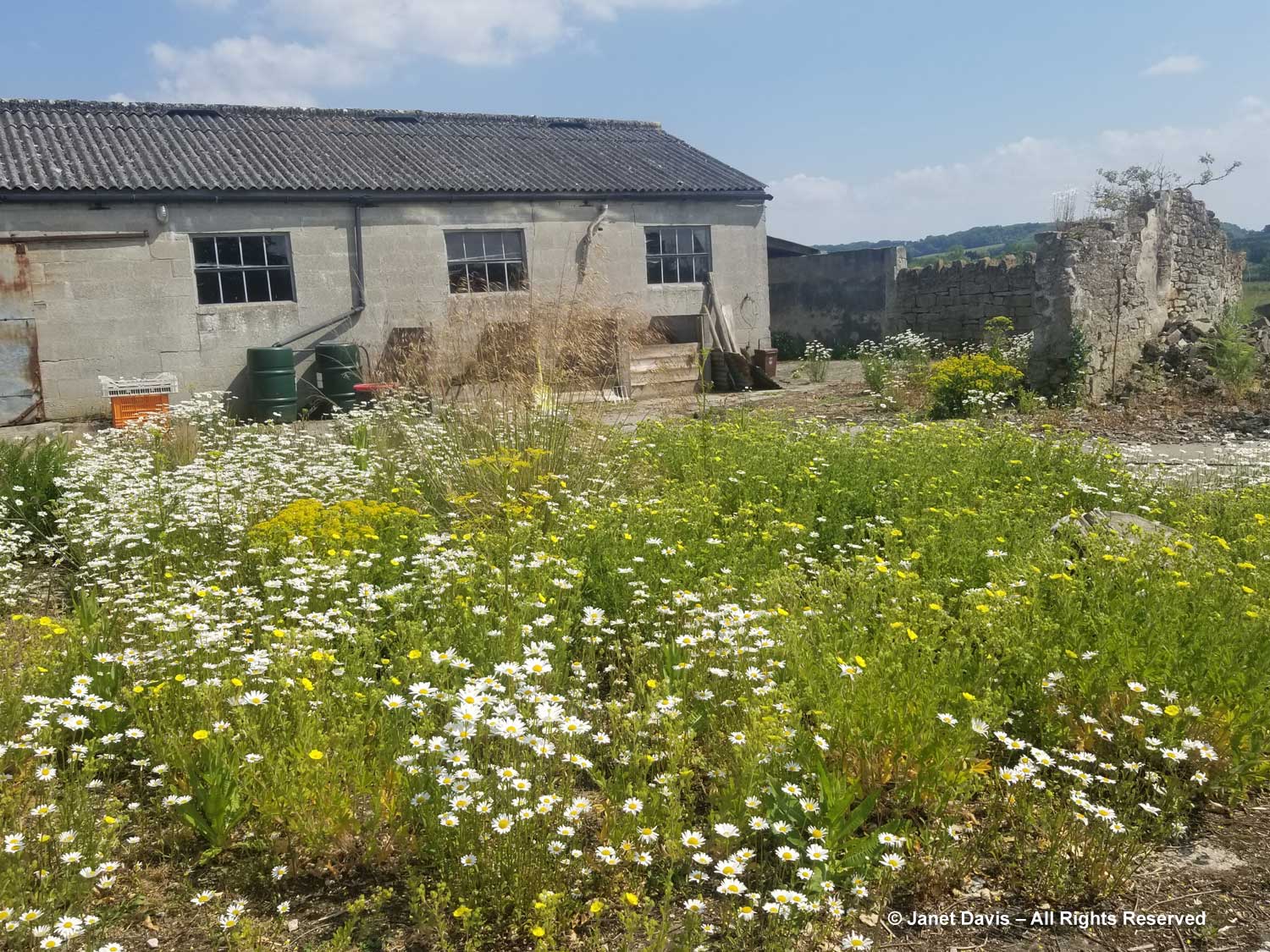
Hens do their bit for ecology, eating the weeds while delivering a bounty of fresh eggs as well.
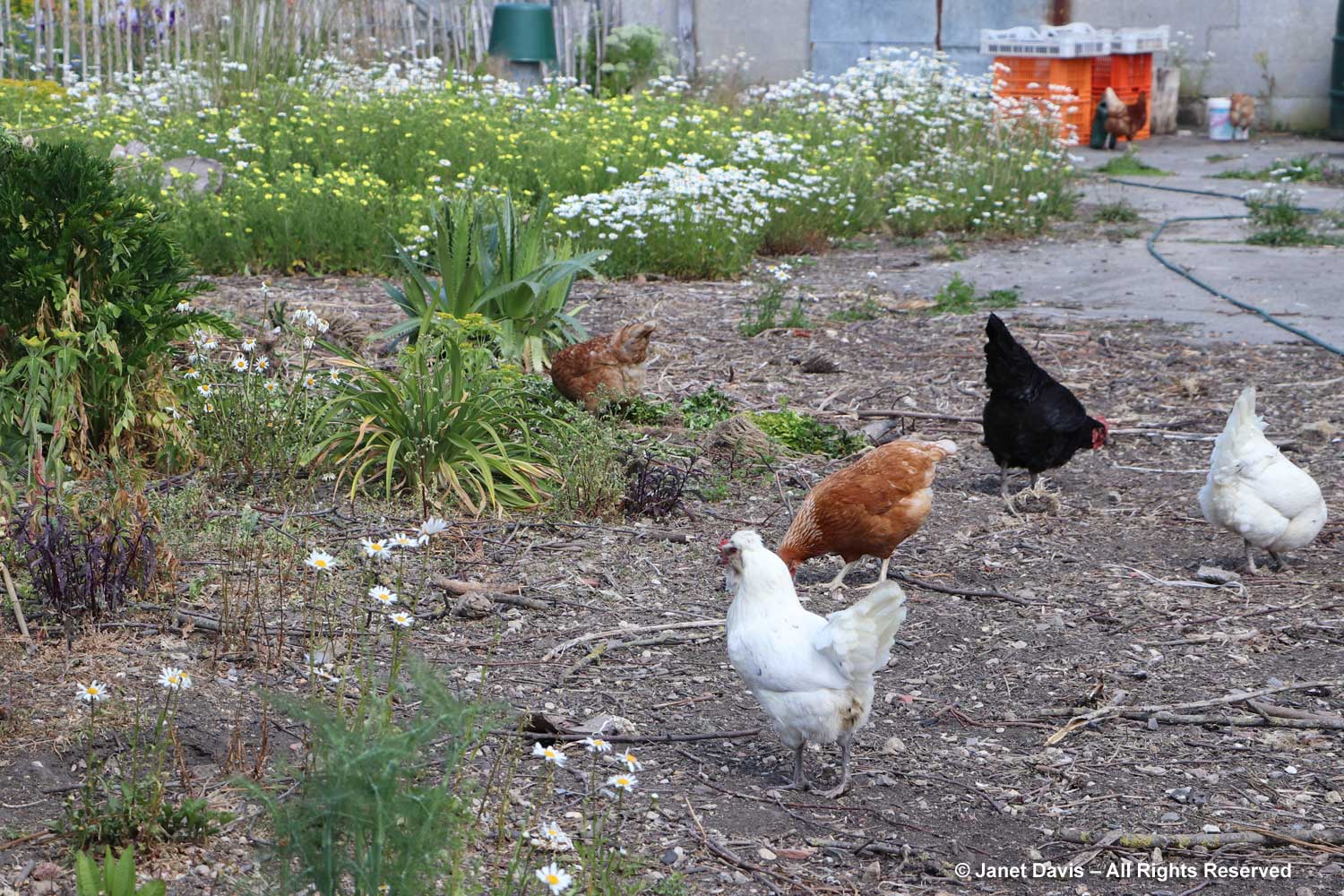
A pair of pigs makes short work of garden waste while creating raw material for the compost pile.
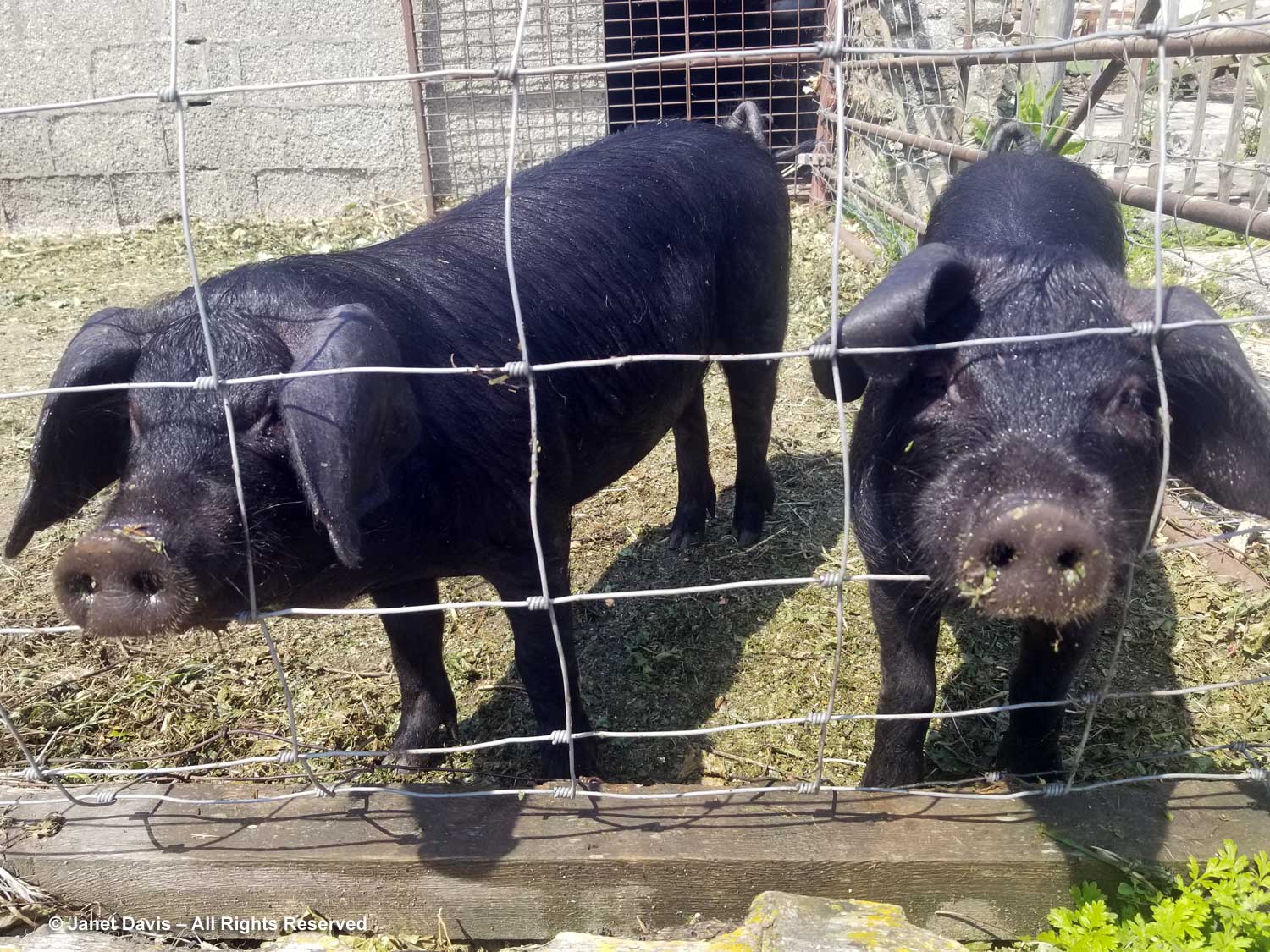
Fergus is an organic gardener, so the compost bins are well-tended.
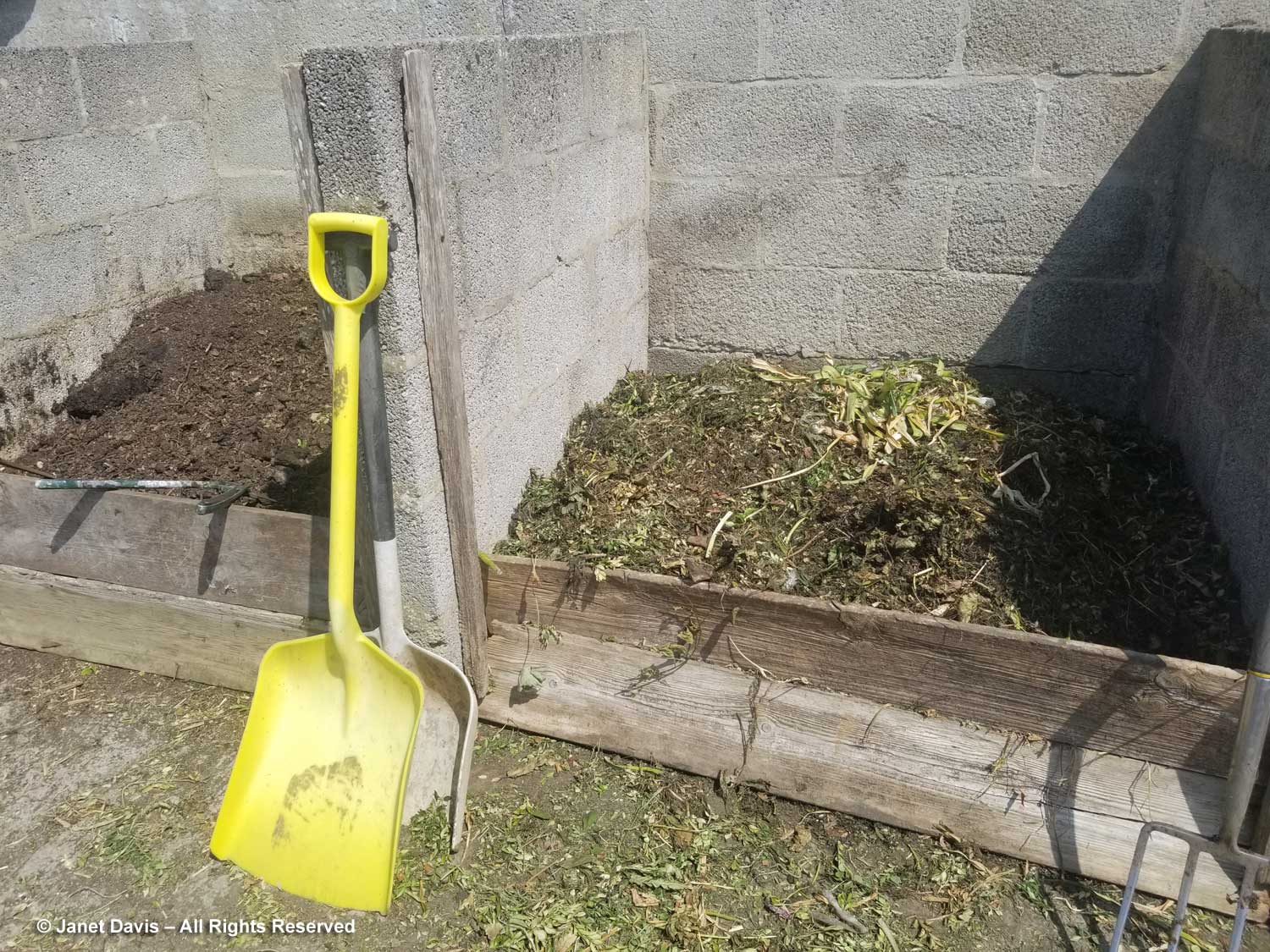
The neighbour’s cows sidle up to the farmyard fence to check out the tour group.
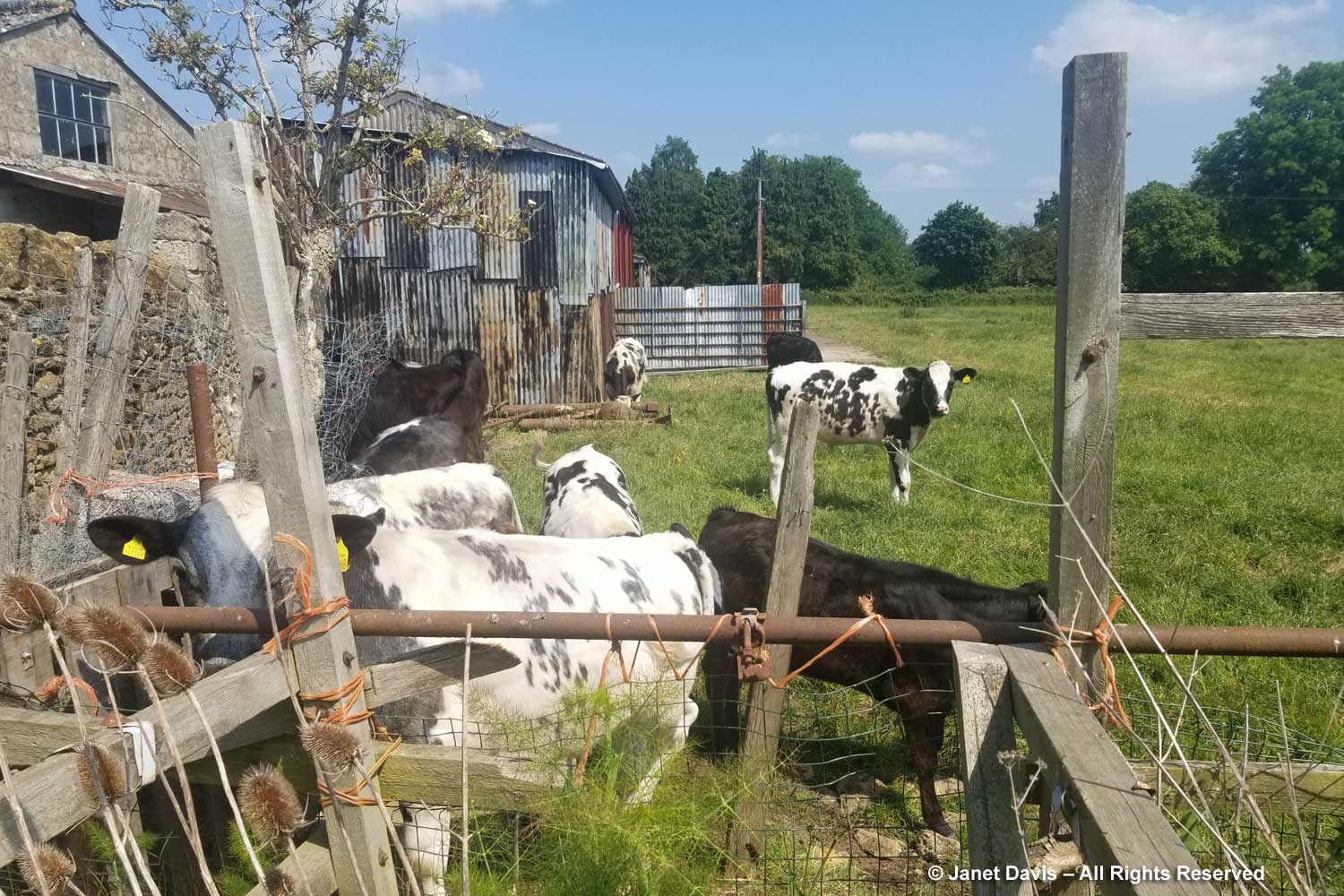
Garlic is set out to dry in airy crates.
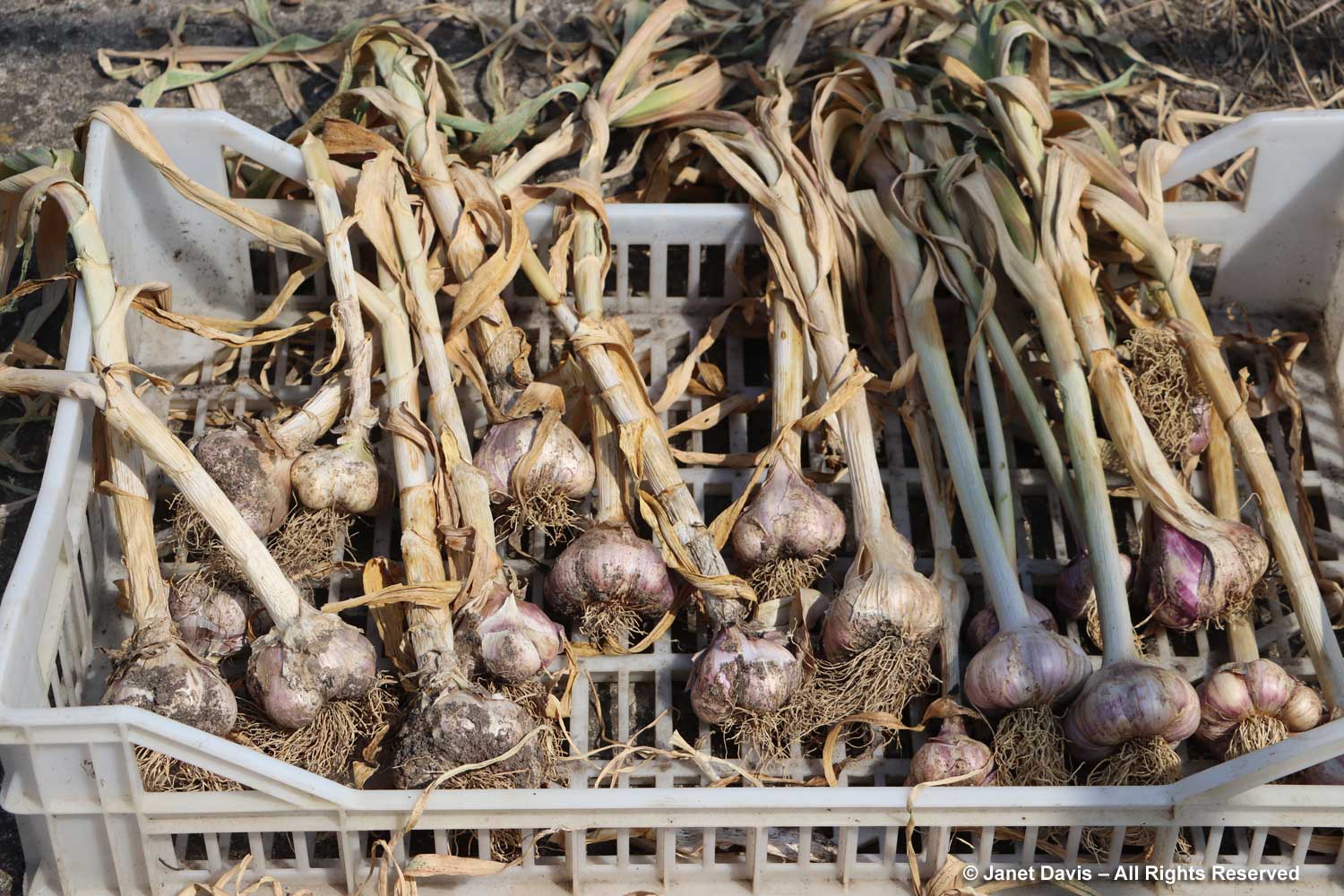
Circling back towards the ornamental garden, I walk beside more old farm buildings and a charming profusion of self-seeded flowers growing in gravelly soil, including white licorice root (Ligusticum lucidum), yellow wild parsnip (Pastinaca sativa) and blue love-in-a-mist (Nigella damascena). Though this looks naturally carefree, Louise manages the mix rigorously.
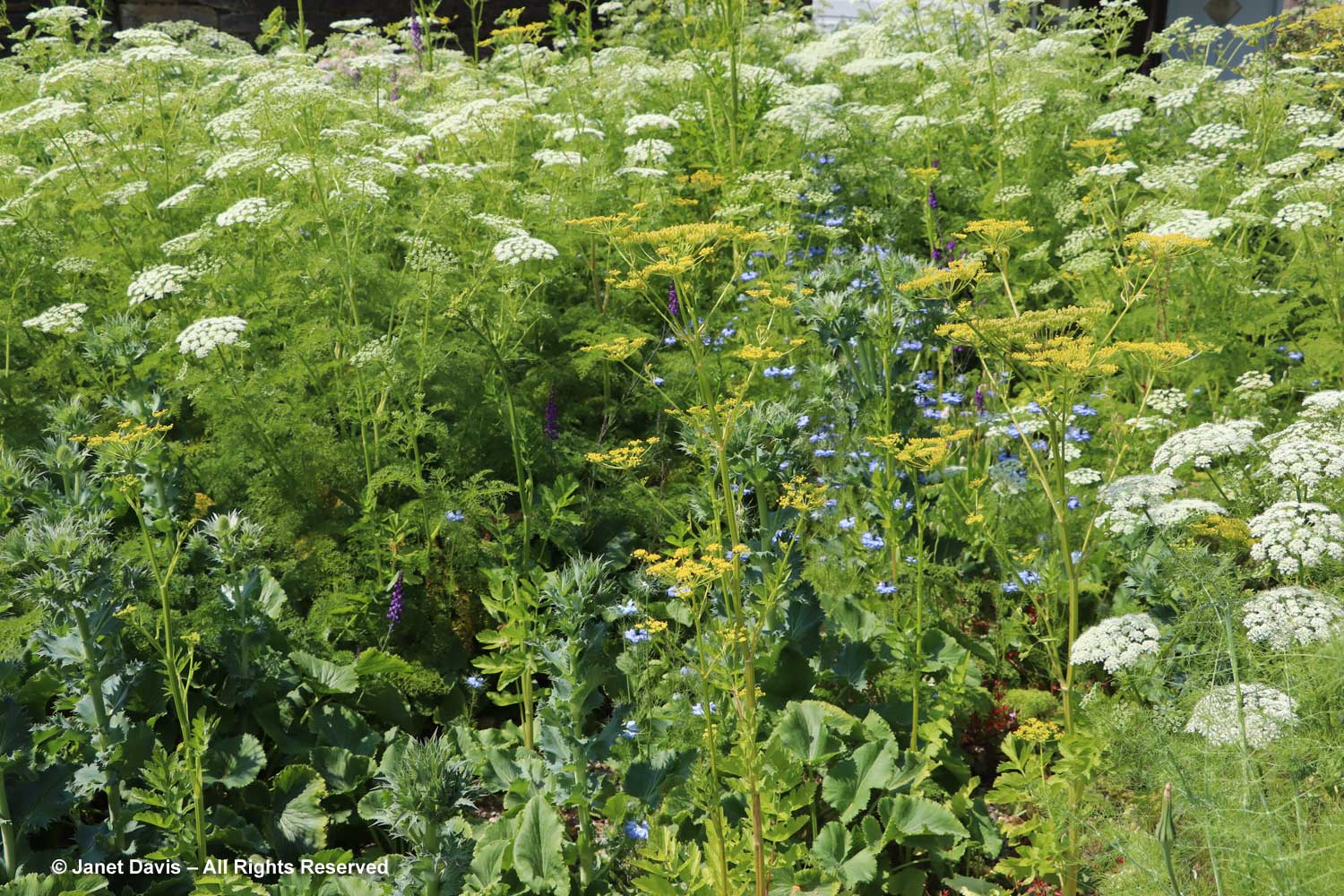
The ligusticum is an Ammi majus look-alike, but perennial and much tougher.
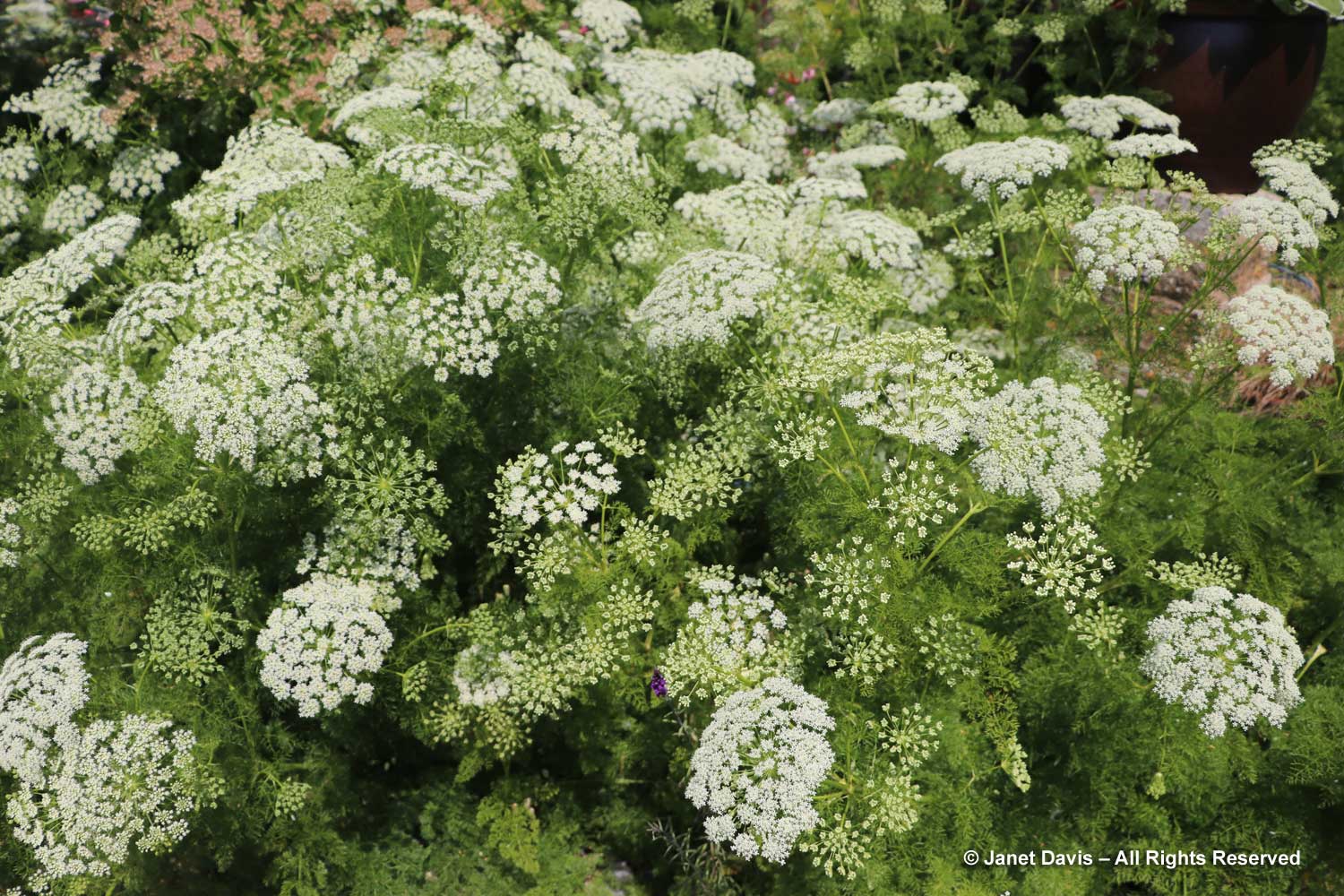
As we take our leave of this delightful garden, the newly-acquired ducks work up enough courage to draw close. As Louise wrote in an Instagram post: “Bought three enchanting White Campbell ducks to feast on the slugs and snails. They’ve done more damage than a 1000 Gastropods with their huge feet and bellies as wide as boats but a 1000 times more amusing“.
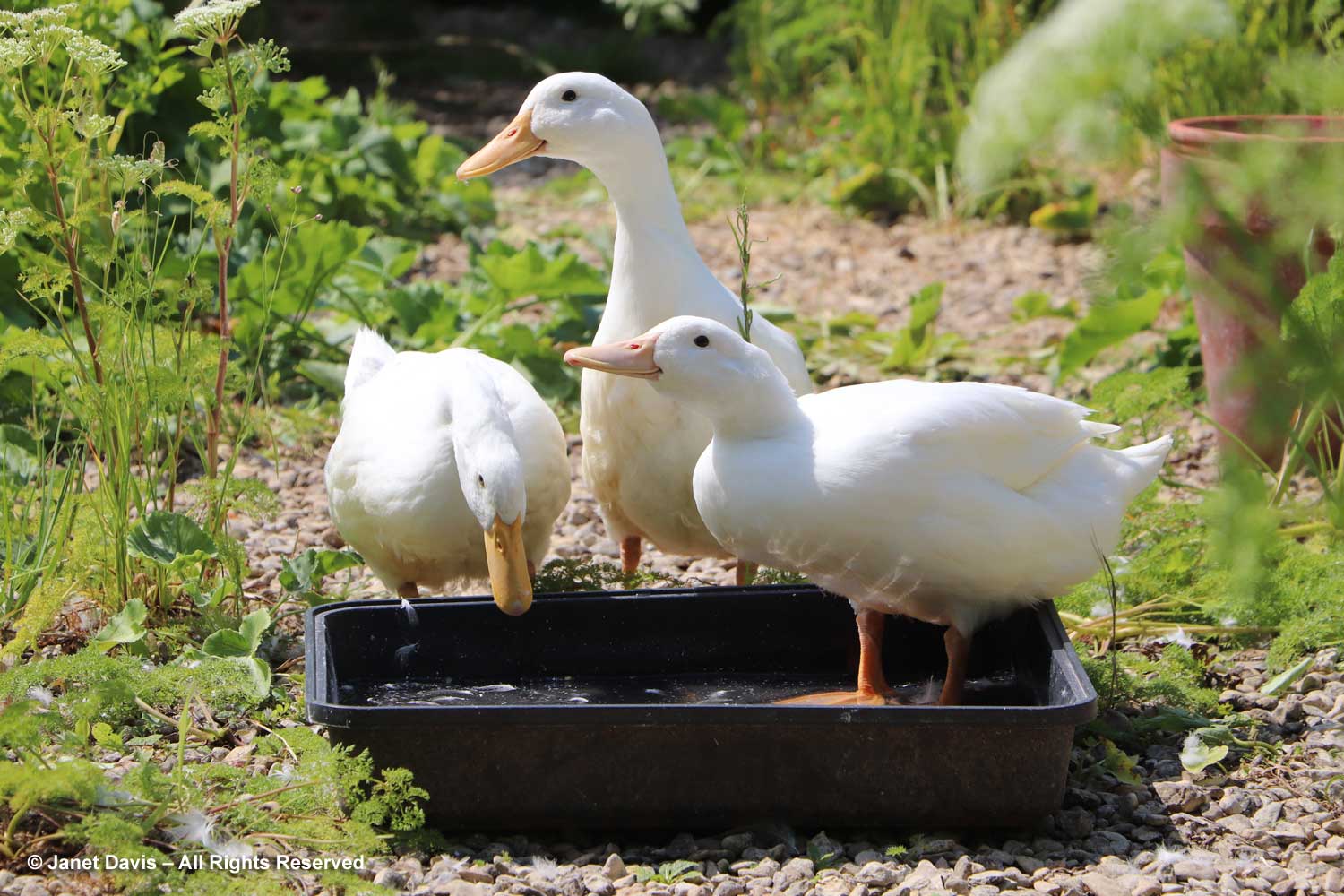
But the ducks, pigs and hens all find a home here in this charming Somerset landscape along with their owners, who have created an inspirational garden that celebrates all the gifts that nature offers to nourish both body and soul.
*************
I visited Yews Farm in June 2023 with Carolyn Mullet’s Carex Tours ‘New Gardens of England – Gardens of Resilience and Beauty’. You might also enjoy my blogs on Malverleys Garden and Dan Pearson’s wonderful Hillside.
